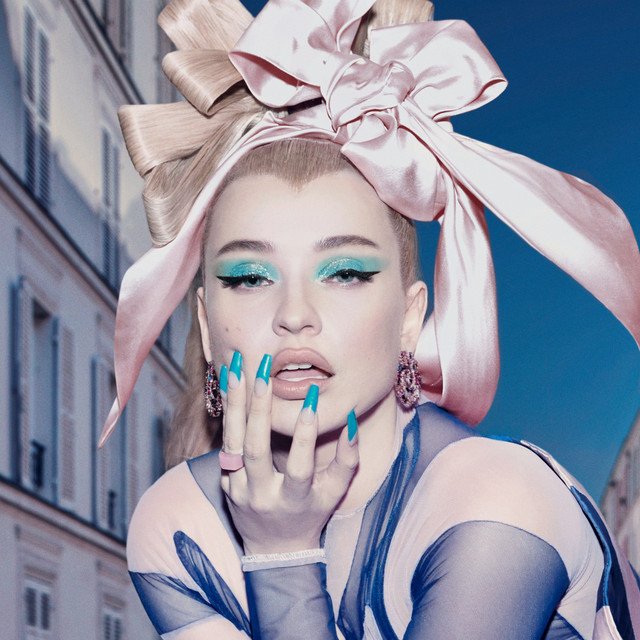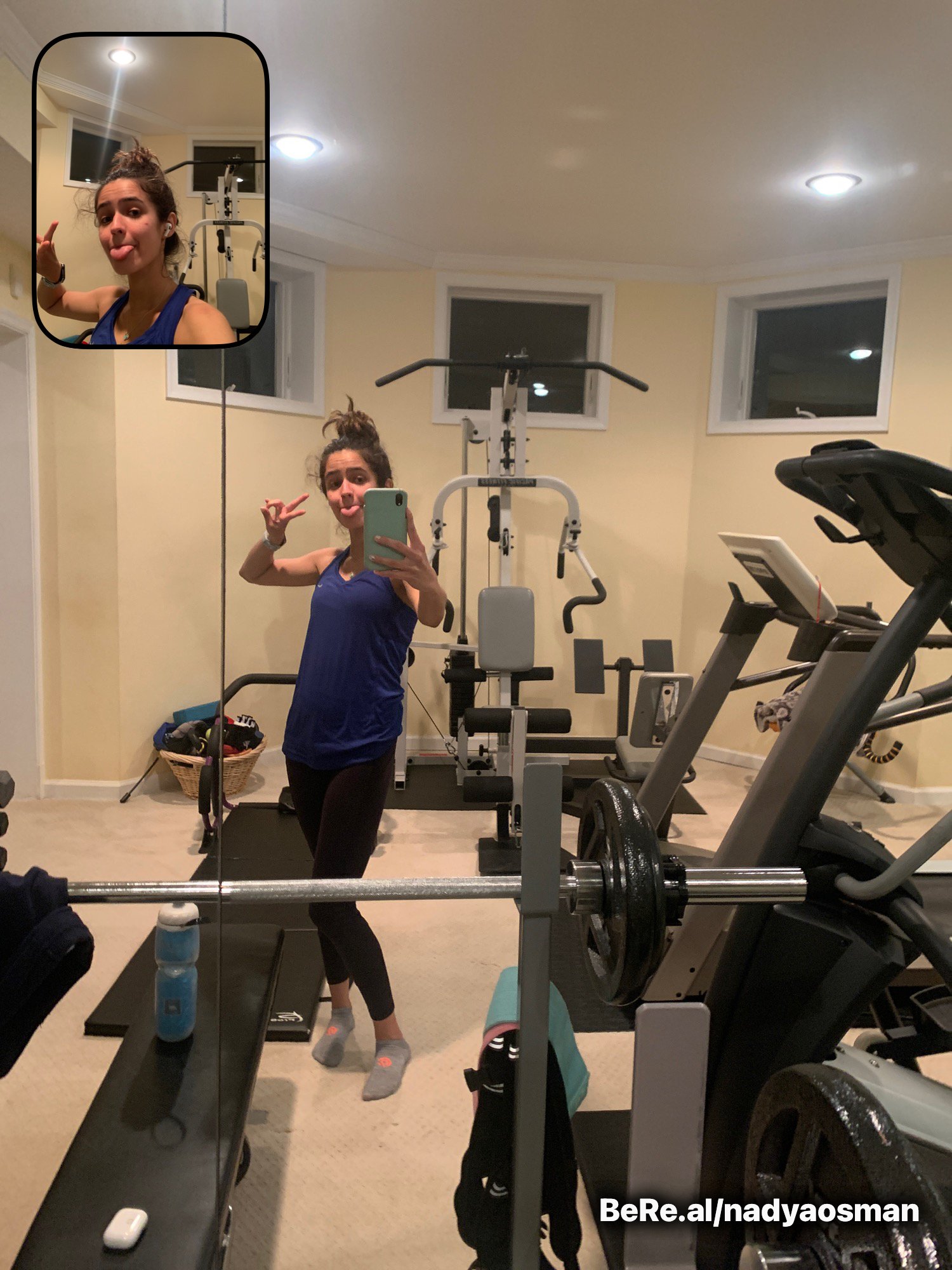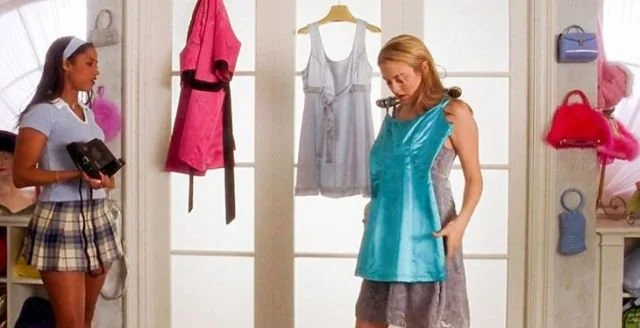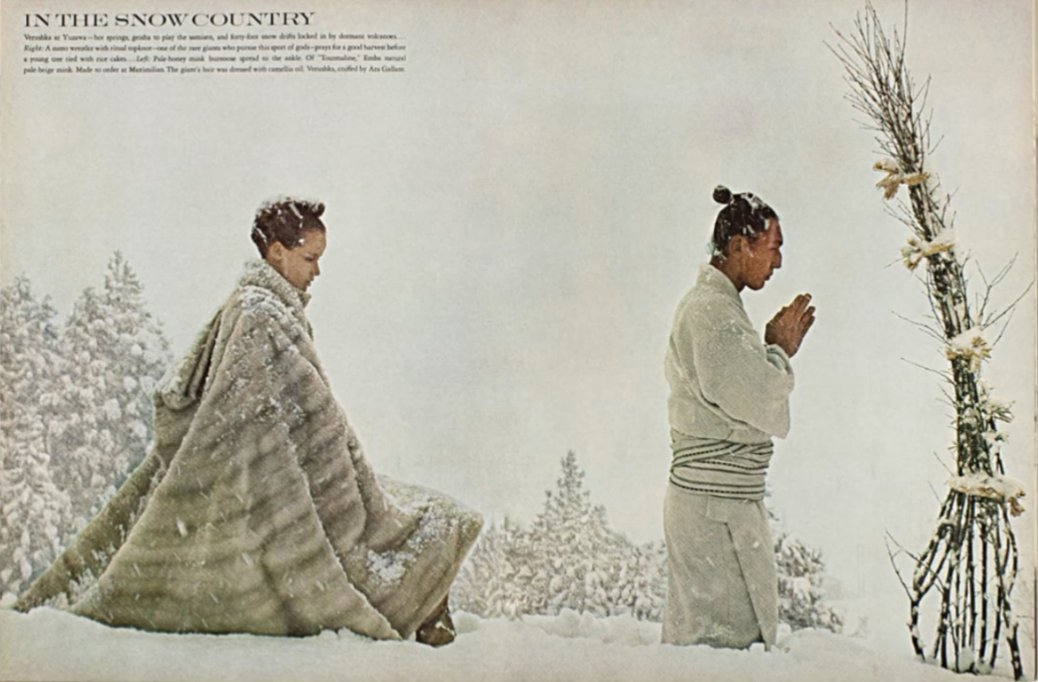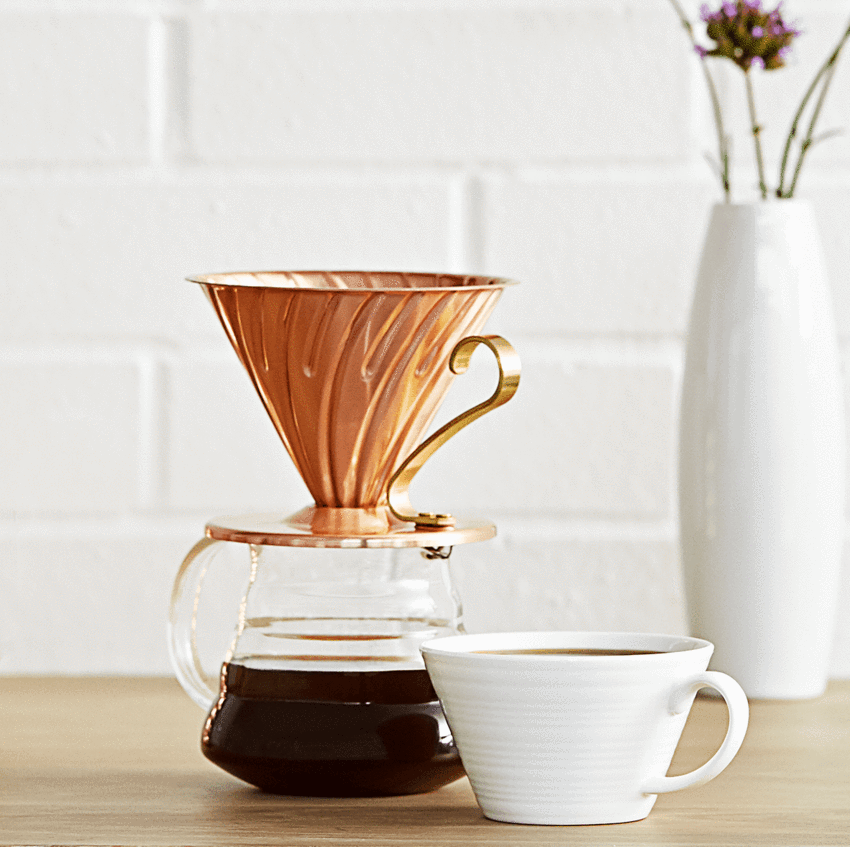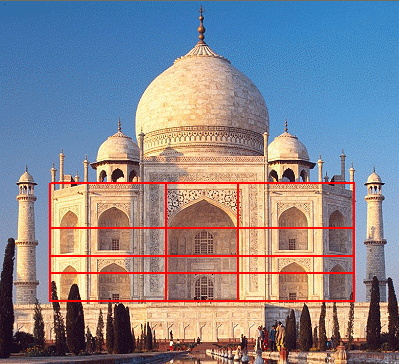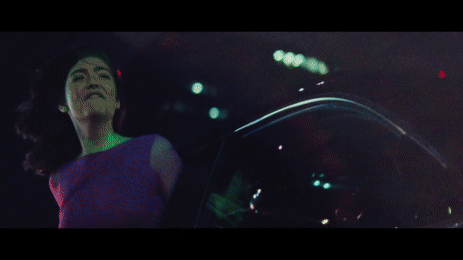This time around—a pandemic, breakup, and a new album later—Marina has put together a show that undeniably showcases all layers of herself. The set ebbs and flows between renewed hits and fresh classics with Marina holding it all together.
Read MoreWhat your freshman year hum class says about your aesthetic
If there is one thing that every UChicago student can relate to, it’s their freshman year hum (humanities core) class. Whether you loved it or not, it certainly was a part of your life, and no one will ever take that away. So, embrace it while we tell you what your first ever UChicago class says about your aesthetic.
Philper:
This class self-selects in a pretty obvious way. You probably tried to go for a dark academia look and wear a sweater vest over a white button up to class at least one time, but it certainly didn’t help make your points any more intelligible.
Greece & Rome:
Maybe you read some ancient Greek plays in a high school English class, maybe you took Latin for several years to beef up your college app, maybe you just think you’re better than everyone. How does it feel walking through campus in your plain black Canada Goose jacket?
World Lit:
This might not have been your first-choice class, but you eventually came to terms with having to discuss two passages from The Epic of Gilgamesh for 3 weeks. This class has probably forced you to content yourself with mediocrity, and your fashion choices reflect that mentality.
HBC:
With your workload from this class, do you even have time to pick out an outfit in the morning? You’re probably too busy sparknoting Nichomachean Ethics as you awkwardly speedwalk across campus.
Media Aesthetics:
There are two possibilities: you either spend wayyy too much time picking out an outfit in the morning, or absolutely no time whatsoever. Half of this class is House of Sunny dupes and the other half is UChicago hoodies and grey sweats.
Reading Cultures:
Is there any actual theme tying any of your readings together, or did the professors just search up “famous literature” and press a randomize button? You probably can’t commit to any aesthetic, even with your assortment of heavily curated Pinterest boards.
Language and the Human:
You’re so quirky and different for taking this class! You probably tell people random facts you learned from this class at parties and they definitely do not care. Good thing your style is impeccably curated from your local expensive second-hand/vintage store, so you have that going for you in lieu of your offbeat personality.
Poetry:
You either genuinely love poetry or you have not read a book for pleasure in the last 5 years. Regardless, you probably consider yourself to be exceptionally sensitive and compassionate, and you most likely dress for comfort over style.
A Reluctant Criticism of Spider-Man: No Way Home
It’s been five years now since Tom Holland’s first appearance in Captain America: Civil War as web-slinging teenager Peter Parker, a down-on-his-luck superpowered teenager idolizing the larger-than-life Avengers and trying to make a difference protecting his community. By now, Spider-Man’s most recent cinematic reincarnation is a worldwide sensation, a statement only made more true by the most recent blockbuster success of No Way Home. The success of the movie is deserved— the fast-paced action, gorgeous (if heavily computer-generated) cinematography, satisfyingly fleshed-out side characters, and the “surprise” appearance and instantly hilarious camaraderie of Tobey Macguire and Andrew Garfield as alternate universe Spider-Men make this an incredibly enjoyable film. Unfortunately, though, the movie falls short in one respect— Peter Parker himself. For even in the midst of the fun and the spectacle of the film, something rings false. The discrepancy is slight, but glaring, and gradually it becomes increasingly clear that the writers have abandoned the development of the protagonist they began to build five years ago. By the end of the film it is painfully obvious: Spider-Man: No Way Home has let its titular character down.
To see how this happens, it is perhaps worth revisiting Peter’s first appearance in a solo movie— 2017’s Spider-Man: Homecoming. In this origin story, the protagonist was simply Peter Parker from Queens, a down-on-his-luck superpowered teenager returning home from an unexpected trip to Germany, idolizing the larger-than-life Avengers he had just brushed shoulders with and now bursting with a desire to make a real difference protecting the world, just as his heroes did. He was enthusiastic, but inexperienced and awkward, which led to ineffectiveness and sometimes to him doing more harm than good. By the end of that movie, he had learned through experience the indisputable importance of experience in the process of realizing good intentions. This newfound maturity was shown clearly when at the end of the film, he walked away from the offer to join the Avengers because he realized that at that point in his life, he wasn’t ready.
This maturity carried over into the next film, when we saw Peter Parker dealing with grief. He journeyed to space to fight against Thanos with the other Avengers, lost five years of his life because of it, and in Far From Home, we saw him reeling after the death of his mentor, Tony Stark. This added a new layer of challenge to the maturity he has won; now, he found himself dealing with a new kind of vulnerability, and it was one that caused him to doubt himself and left him open to be manipulated by the movie’s central villain, con man Mysterio who used Peter’s feelings of guilt, regret, and inadequacy to convince him to hand over Tony Stark’s legacy. This one honest mistake nearly destroyed the world, and so Peter had to learn quickly to trust what he knew to be true in the face of skilled manipulation and gaslighting. This incredibly necessary self-assurance was hard-won as Peter realized through painful mistakes that he has to trust his own hard-earned abilities and his strongest relationships in the face of manipulation and gaslighting if he wants to succeed. It’s a powerful message, and he finally triumphed as he learned to utilize his intuition and be thoughtful, intentional, and selective about what— and who— he allows to sway his actions and beliefs.
This brings us to the beginning of the most recent film, No Way Home. By now, the Peter Parker we see onscreen has come a long way from the first time we met him. He knows the world is infinitely more complicated than any one person can know, but he deeply respects its complexity. He knows that his best assets are the abilities and knowledge that he has fought hard to win, and he trusts these things thoroughly. He is no longer naive, overconfident, or easily misled, and he understands that actions can have incredibly heavy consequences. Peter Parker has grown immensely from the beginning of his storyline. He is more than competent now; he is cautious and aware, both of his surroundings and of the weight attached to any course of action he can choose.
It is jarring, then, that the entirety of No Way Home is built around Peter Parker making a rash decision without attempting to understand the consequences. Barring the unlikeliness of Doctor Strange complying, it is inconsistent that Peter would request and condone the rewriting of the memory of the universe to correct his mistake. The excuse the movie offers is that he was desperate; he was the reason his best friends had not gotten into college, and the guilt pushed him to act rashly— an excuse that might work had the previous movie not been centered around Peter learning to act rationally despite the pressures of guilt. Furthermore, a student as logical, analytical, and intelligent as Peter is shown to be would likely have familiarized himself enough with the admissions process to realize that a person can, in fact, apply to college more than once, can transfer from one college to another, and can contact admissions officers about extenuating circumstances. Finally, and most importantly, the sequence of events we are presented with is fundamentally nonsensical. However poignant the effects of desperation may be, it is inherently out of character for Peter Parker to make an uninformed, selfish decision when the entirety of his character arc over the last five years has been carefully tailored to establish that he is neither uninformed nor selfish. Spider-Man is a deeply caring individual, and he possesses a hard-won maturity. It makes no sense for him to reach for a quick fix, and it makes even less sense for him to gamble the fate of the multiverse over a college acceptance letter.
This sudden abandonment of a thoughtfully-crafted character arc reflects a growing trend in the MCU— the tendency to ignore what they have established, whether in their universe or in their characters, in order to usher the world forward into the next “phase”. We are now, according to Marvel’s outline, in the fourth phase, which includes WandaVision, Loki, Shang-Chi and the Legend of the Ten Rings, Eternals, and several other shows and movies yet to come. In almost all of these, Marvel reaches for the quick fix— in WandaVision, Wanda’s unethical actions are excused as the fault of a surprise villain who is then immediately disposed of; in Loki, an interesting attempt at expanding the rules of the universe ends up a nonsensical mess that was the fault of a villain who was, again, immediately disposed of; in Shang-Chi, the characters’ development is handled brilliantly, but this is allowed very little consequence in the grander scheme of things; in Eternals, not a single person is more than a caricature, and they act not as people but as plot devices fighting yet another computer-generated and oddly-named villain who conveniently disappears at the end of the movie. None of these films or series are inherently at fault for this— or rather, they wouldn’t be if they existed in a vacuum as standalone action movies. But the fact is that they don’t; each installment is meant to play into the larger story of the MCU. That can’t happen if every character’s development starts from ground zero whenever the plot requires it. No Way Home is an especially striking and worrying example, because so much effort was put into the development of the character’s motivations over the course of the previous films, and regardless, this development was so quickly abandoned. The lack of hesitation that Marvel displays when cracking the structure they have established in favor of momentary plot convenience shows an unsettling willingness to sacrifice the universe they have spent decades building in exchange for fleeting thrills.
Not all of this, of course, is the fault of No Way Home. Overall, this film was well-made, artful and entertaining. It was full of brilliant choices— the subversion of the expected outcome when MJ fell and was caught by Andrew Garfield, and was more rattled by his tearful reaction than the fall itself, was artfully done. Peter’s loss of his friends and his selfless decision to let them forget him was a striking touch. The brotherhood, confusion, and mutual support offered between the three versions of Spider-Man was hilarious and incredibly gratifying, and the continuation of the twists on home as a theme was well-crafted. The movie certainly has strengths on its own and in relation to its audience, and it’s enjoyable to watch. But on a larger scale, a narrative universe that defies its own foundations isn’t one that lasts, and if the MCU is going to attack one of the fundamental pillars of storytelling— character development— they should form a pretty ironclad plan for what to replace it with. Spider-Man: No Way Home didn’t, and that’s why, as entertaining as it was, it ultimately fell flat. I hope that the writers and directors find a way to return to or substitute for this, or the future of Marvel’s storytelling runs the risk of becoming fragmented— or, in the worst-case scenario, directionless entirely.
Instagram can never be casual and here’s why…
If you grew up during the Social Media age like me when Instagram was fresh on the scene and quickly climbing the ranks of popularity (we're talking 2010- 2012 LMFAO Party Rock Anthem era), you were probably still in elementary school back then. And despite being too underaged to experience the full extent of the “causal” nature of the app (the one your millennial peers won’t shut the fuck up about) you maybe still remember the badly lit duck lip selfies, gross blue tinted filters, and slightly unhinged photos people (maybe even you) would take with friends or of random shit seen on the daily… yadi yadi yada… you get the picture (wait—this unintentionally ate).
If you do, that’s all well and good because that means you understand the nostalgia. But, do you remember the shift?
The day that the app made a quick one-eighty on us?!
If you don’t, no worries cause I don't really remember the specifics either. What I do know though is that the day we decided to make someone famous on that app because we got so concerned with and fascinated by their lifestyle, travels, clothes, relationships, etc. is the day we all collectively forfeited the “casual” Instagram. Now whether or not that was a mistake is up for debate and not at all the subject of this article. You know what is though? The very sad fact that a “casual” instagram, no matter how hard we try, will simply never be a thing again.
So, better start mourning if you didn't already because just like rainbow loom and the peak of Kesha’s career, that shit died in the early 2010s ( we’re talking pre 2015 Kylie Jenner lip challenge).
Why, though?
Well, if we’re really thinking about it, the culture today surrounding Instagram is simply oversaturated and reflected by individual influence and our personal obsessions with perception. Think “when was the last time I shit posted on my main?” Or if we're going deeper, ask yourself why it is that you have a private finsta or story dedicated exclusively to spamming memes or photos that are “cute” but not “cute enough,” and only select people can see.
It’s because right now it's somewhat socially unacceptable to do the extent (key word) of whatever you want on social media. I say extent because I don’t believe we still have the luxury of posting anything that we somehow haven't already curated or analyzed a million different ways or at least once (and yes this is true even for photo dumps). That nitpicking is exactly what makes our instagram posts today so ingrained in this insidious perfectionism. It makes it so that even in the instance that we do choose to post whatever it is we believe is beyond being perceived, we still deal with this massive inability to detach ourselves from the amount of likes, engagement, follows, blah blah blah, that we do or do not get. Instagramming has become so personal, that a girl can't just post a picture of a rock and call it a day without it posing a risk to her social media standing and self esteem.
Hell! We have traveled so far into the deep end, I fear that at this point posting that random rock would lose you a bunch of followers until someone else who’s famous goes “wow that’s so aesthetic!” And with that one statement suddenly make it socially acceptable for everyone to post rocks, and therefore no longer casual or beyond the ability to be perceived you tried so hard to detach yourself from. There’s really no escape.
Don’t get me wrong, I'm aware that this is a very superficial argumentative topic that by no means I am the first person to comment on. However, I do think that in this fucked up and low key depressing irony, it just goes to show how shallow our society itself has become. Who would have thought we’d ever make it to the day where I can say “casual instagramming doesn’t exist” and have a full discourse about it. That’s honestly wild that we managed to suck a little bit of the fun out of sharing pictures on the internet. Katy Perry “Roar” music video wild (mega props to you if you remember that one)!
the Romantic rorschach test | inkblot silhouettes on a scarlet page
it’s Valentine’s Day today, you know
valentine
the dreamscapes you painted me are dressed
in blood-red rose petals
that smell like
Valentine’s day
Where you take me to sunlit woodlands
and pearl staircases
that lead to nowhere
How romantic
Where you take my heart just to leave it hollow
and let me swim alone in a
boundless sorrow
How romantic
Where you forget me and I see your life
in online posts and wedding invites
knowing I’ll never show up
How romantic
it’s Valentine’s day today, you know, and the dreamscape of you
is now but a melody made memory
and my life now all but static
because somehow the smell of you still beckons
How tragic—
—ally
romantic
Photo by Jojo Wana
Feeling stuck on campus? Gotcha!
As if you hadn’t noticed yet, I’ll remind you again: the weather is cold and is getting colder. The exteriors that we once threw ourselves to get away from the cramped buildings are now testing our limits, granting us only the time to cover the distance from our station A’s to B’s. In this situation, it is only natural to feel stuck in the buildings that we are used to visiting every other day. If you are also like me, trying to minimize your time spent outside, it may be difficult to plan what to do in between your classes. You can go back to your room/apartment, but you only have an hour and a half. Is it worth it to walk all the way back there? Should you visit one of the libraries? But, until you find the motivation to start your work, the clock will already be showing the class time. Here, I’ll try to give you my suggestions that may be a better option than scrolling mindlessly on your phone. Or, maybe fresh places to scroll? You may or may not have heard all these things. Yet, here is your concise and compact list of activities that will enlarge your space perception of the campus, offering you new domains to spend time.
Create an on-campus coffee shop checklist
This one is obvious, but there are many coffee shops on campus. If you are a regular customer of that cafe that’s right next to your class, maybe it could be a good idea to break that habit and visit another one. You can either determine your go-to coffee and try that item in each and every one of the cafes on campus, creating your own caffein ranking, or can learn about the best selling offerings of the cafes and agree or disagree with those accepted campus truths. Ex Libris, Pret, and Harper Cafe may be few of the cafes that are well visited. However, you may add the Harris Cafe in the School of Public policy or Gordon Cafe in the Integrative Sciences Building to your list. If you need a more extensive list of cafes to add your to-go list, you may want to visit this link to see your options.
Although this is an old list with lots of permanently closed cafes, this may serve as a starting point for your discoveries.
Logan Center
I know that Logan Center may not be on you road to classes; however, it offers a wide range of cultural activities that are close to home. Without getting too far from the campus, you can listen to the University Chamber Orchestra’s concert and spend a quality time looking at the responses of various artists who “‘draw’ on each other’s minds, creating new genres of art and scholarship” through “drawings, sketches, diagrams, scores, texts, and ephemera”s in the On Drawing Drawing On exhibition. I know that we are all aware of the existence of Logan Center and their great arts experience offerings. Yet, it is always so easy to forget these kinds of opportunities when busy with writing a seven-page history paper.
Visit Oriental Institute
Oriental Institute is right under our nose, next to quad, yet many of us haven’t even been there once. You may want to pay a visit to this well curated institute when you are not sure what to do in that 50 minutes break in between your two classes. Not leaving the territories of the Quad, I am pretty sure that that 50 minutes will not be enough. Now hosting the Joseph Lindon Smith: The Persepolis Paintings exhibition, Oriental Institute can easily help you fill that gap in your schedule for a couple of days.
“Landscape scene of the monumental terrace including the Gate of All Lands, Persepolis, Iran (oil on canvas, 318 x 201 cm, OIM G4).” Image via
Travel around the quad – but without leaving the buildings
Some of us are aware of the hard-to-find passageways between the buildings. However, did you know that you can travel around the Quad without even stepping outside once? The legend says that every building on the Quad is connected to one another in one way or another. However, it is not always as easy as passing from Harper to the Wieboldt building. You may have to take the stairs a couple of times, just to see that the passageway is on the third floor of one building and the basement of the other. If you have the patience to complete the track, you may want to add this item to your pre-graduation to-do list.
Discover new study spots
You don’t always have to do something actively, You may have lots of readings to do or internship meetings to attend in the middle of the day. So, instead of an institute, a study spot is better for you. Yet, the good, old Reg may have made you have enough of it. Why don’t you try to discover new study spots on campus then? Did you know that there are comfortable chairs and two large study tables right in front of the study abroad office? Or, have you visited the library on Eckhart’s second floor? There are many departments and offices on campus that have their own study spaces and/or libraries available for student use. So, instead of sitting in the same cubicle on the third floor of Reg every time, you may just want to visit one of these secret jams on campus.
Thumbnail image via
A Cocolicious Song for Your Winter Playlist
For those who haven’t strolled out into the Chicago air lately, might I tell you one thing: It is cold. Not just any sort of cold weather. This is an aggressive cold. A cold with an unwavering vengeance on anyone who dares to stand in its charted path. To step out into the wind is to feel as if you are being attacked by a barrage of knives.
Which is to say that winter is upon us, frigid and depressing and — might I add once again — cold. Life feels so dim. The sunlight is out for as long as it takes to get your rapid Covid test results, and the nights are never-ending. Sad music playlists are in, and the world of vibrant pop music has fallen into hibernation while we await the glorious summer sun to return with some fun summer anthems. Yet, despite all the snowy gloom and being stuck in our rooms, the hyper-pop music of Kim Petras has descended through the dark clouds of winter to banish our blues with a bright taste of summer fun.
Image Via
For those unaware of pop artist Kim Petras, here is a quick introduction.
Born in and raised in Germany, Kim Petras is a singer and songwriter of pop, EDM, dance-pop, and other pop-adjacent genres. Having risen to popularity in the last five years, working with artists such as Charlie XCX and Kygo, Petras signed with Republic Records in 2021 and plans to release her first album in 2022. Recognized as a trailblazer for the transgender community, having transitioned publicly in 2008 at 16. Kim Petras represents a part of LGBTQ+ community underrepresented in mainstream music and makes music for her people— her music having gained extreme popularity in the queer night scene especially.
Her newest single, “Coconuts” released two months earlier, to the shock of her fans, on December 3rd, 2021, following the release of “Future Starts Now” a few months prior. “Coconuts” is a provocative and bubbly pop anthem that celebrates the body, sexuality, and summer.
But before I continue this article, I feel I must affirm what you may be thinking: Yes. This song is a tribute to Kim Petra’s breasts and breasts in general. You may feel jarred by this, but you will come to love it.
“Coconuts” is inarguably a memorable song. With a bouncy melody with whimsical summer-themed lyrics underscored by a deep bassline. While the song follows the well-constructed pop formula—a formula that we are all well acquainted with—the song is fresh and ripe among other pop songs. There isn’t a song closely comparable to “Coconuts” adding to the song’s exciting authenticity. That is to say, the song has created a league of its own. Which in part are thanks to its unabashedly creative and fruity sexual euphemisms, implanted in every sentence and the cherry on top.
The euphemisms are addictive. Paired alongside the melody, they stay with you. They are bubbly and encompass many points of reference. A great example is in the first pre-chorus: “So juicy and so ripe / You wouldn’t believe (believe) / I give em’ different names / Mary-Kate and Ashley”.
In this single pre-chorus alone, Petras draws from many places. From comparison to fresh fruit to a reference to notable twins Mary-Kate and Ashley Olsen, there is an array of summer and pop culture references is throughout. Nearly every line in the song is a euphemism, and even the song title itself “Coconuts” has its own sexual connotation. While the song’s euphemisms are on the nose, the song isn’t always direct about it. Instead, Petras opts to masquerade her song as a bubbly radio-friendly anthem that with each listen becomes a colorfully energetic homage to breasts.
The song has exploded online because of how it blurs the line between blatant sexuality and summer anthem. Everyone on Twitter has taken a taste and clearly adores this carbonated summer anthem of sexual confidence that Kim Petras.
Besides the song itself, what is so brilliant about “Coconuts” is its release. The timing is perfect. What makes “Coconuts” the perfect release is that it aims to subvert what we expect of the winter music market and does so by flawlessly opposing the status quo. Following the mass release of somber and contemplative music, such as Adele’s 30, the release of “Coconuts” is the fantastical summer sun among the slippery ice. It is surprising, bright, and opposes winter so avidly. Also, followed by the release of a lyric video and dance video, reminiscent of 2010’s music videos (i.e., California Girls by Katy Perry). By giving us a winter pop anthem, Petras makes the song stand out in our minds and in the eye of the media. She has held our attention with her coconuts.
But Petras knows this. Framing the publicity for the single around this idea of a winter anthem as seen in this Paper Magazine shoot.
Image Via
Kim Petras clearly understands her audience, what they want, and how to best deliver it. She is irreverent and unabashed and has defined her career in her choice to do what she pleases. Petras isn’t afraid of pushing bounds, having performed “Coconuts” at the EMA’s in Hungary despite intense laws regarding “vulgar content,” risking an arrest. “Coconuts” is a prime example of Kim Petras and her understanding of what her career needs while best releasing this song so it can be best appreciated. “Coconuts” is the perfect winter anthem. That is what is so brilliant, as it pushes past our expectations. We don’t expect pop during this time of year, yet I can’t imagine a winter without “Coconuts” bringing the sun we need. It encapsulates escapism, giving the world three minutes to live Kim Petras’s coconut-filled world of summer and sex when the world outside can’t be that.
Header Via
Your New Social Media App
Have you ever been lounging around, wondering what your friends were up to but were too embarrassed to randomly text them what’s up? Well, I’ve got the app for you.
Be Real is a photo app that is very similar to Pic Your Moment and One Second a Day – it gives you a notification once a day to post what you are doing at that exact moment. The difference is, everyone with the app gets the notification at the same time. You then have two minutes to post a snap of that moment, and what’s cool is that it takes a picture on the front-facing camera and the back-facing camera simultaneously. The picture also disappears once the next notification pops up.
It’s not the type of social media app that you spend hours on. The posts are limited to your friends (although there is a different discovery feed of random people), as the idea is to “Be Real” by showing whatever you’re doing at that exact moment. Now of course my mother would say, “Well you’re not being real because you’re taking the realness out of the moment by feeling the need to post it on social media instead of just being in the present.” Okay, Milly. Maybe you’re right. But also, it’s indescribably fun to see what your friends are up to at that second.
Me being boring
Me being slightly exciting
Additionally, Be Real breaks down some of the traditional expectations of social media. There is no way to edit the photo, and you can’t upload something from your camera roll as you can do with One Second a Day. This allows for raw moments that are not aimed at getting likes (although there is a like feature) but instead at engaging with your friends to see what they’re doing in real-time.
In all honesty, when I first got the app, I assumed that most of my friends would post themselves constantly having fun and doing exciting things. I was worried that I would feel left out or sad I had a “boring” life. In reality, when I scroll through my feed, all of the posts are similar - the common post is either studying or being in bed relaxing. It was refreshing and relieving to see that my life wasn’t “boring” or sad and that social media apps like Instagram only show the highlight reels of our lives. Be Real shows the everyday monotony that is both comforting and in itself exciting to share with those closest to you.
Other schools have already made Be Real popular across their campuses. Can we also get UChicago to Be Real?
Featured image via
How to Curb Your Shopping Addiction
I confess I am a shopping addict, and probably have been since birth. I assume it’s in my DNA, passed down from my fashionable mother who has an undying love for stilettos. Growing up, nothing had allured me more than the mall. Leaving Abercrombie with a bag depicting a shirtless man on my arm infused a sense of power and completeness in me. In middle school, the mall even became the principal hang-out spot. With endless rows of stores containing endless racks and piles of items to buy, how could I not be sucked in?
However, after the serotonin boost from buying something has subsided, I am often left feeling guilty and dissatisfied. I second-guess my purchase and ask myself, “how much use are you really going to get out of this?” As I’ve become more aware of my consumption and how purchases are often unnecessary, I’ve developed a few ways to curb my shopping addiction. Hopefully, these measures will help you too, and we can combat consumerist culture together.
Image via Modsy.
Look inwards: why do you want to buy?
When I get the urge to shop, I find that it is often a response to some emotion I am feeling, as opposed to a reflection of a need I need to fulfill. I ask myself a series of questions to assess why I am getting a desire to buy new things. Am I bored? Am I sad? Am I anxious? Do I need something exciting to do? Am I thinking about fashion and outfits and need a way to actualize them? Oftentimes, I will find my answer when I get a sense of how I feel. From there, I will find a better way to respond to these emotions than through shopping.
What is motivating you to shop?
Our daily lives are inundated with marketing and advertising that are intended to motivate us to buy the product they are selling. A phrase I have often heard about advertising on social media is that the users are in fact the product, and our time and space on our social media platforms are being sold to companies to use as advertising space. Though having a “shopping addiction” can certainly relate directly to socioeconomic privilege, many people feel motivated to consume regardless of the means they have. We should all begin to ask ourselves, what forces outside myself are pushing me to buy more than I need?
Image via Cosmopolitan.
Shop your own closet.
Look back to your own closet and find the pieces you wear the least. Challenge yourself to style them in a way that you like. You already own this, there is no need to buy more when you already have things that you are not getting utility out of. If you are into clothes, it is a super fun challenge to style unused clothes in an interesting way.
Trade clothes with friends and family.
One of my favorite ways to shop without actually shopping is by trading clothes with my mom and my sisters. Though I already have plenty of hand-me-downs from all of them, we sometimes go through our closets and offer clothes we don’t get enough use out of to the others. Not only does this allow me to style pieces I wouldn’t normally buy, but also it’s more sustainable and doesn’t cost anything.
Image via Harper’s Bazaar.
When you do decide to shop, make it better for the world: buy secondhand.
Over the past few years, I have transitioned away from buying retail clothing to thrifting. If not shopping at thrift stores, you can access secondhand clothing through online reselling platforms like Poshmark, Depop, and eBay, or the RealReal and Grailed for luxury brands. I find that shopping on secondhand online platforms reduces my desire to consume since I am often searching for a specific item, rather than passively browsing through a store that has many pieces that would appeal to me. Furthermore, secondhand stores and websites are full of exciting and eccentric pieces. When browsing, this forces you to pay attention to which pieces you are attracted to which helps solidify your sense of personal style.
Featured image via Refinery29.
Album Review: Voyage
We all know ABBA in some form. If you don’t… you do. Trust me on this one.
Image Via
Since their conception in 1972, ABBA has found a way to permeate pop culture and media through their distinct, almost irreplicable music—a vibrant mix of pop, pop-rock, and disco. Unafraid to tackle odd subjects, such as kissing your teacher or happy vacations to Honolulu, their music spans far beyond chart numbers. Their song “Waterloo” having won the Eurovision song contest in 1974, and band members and songwriters Benny Andersson and Björn Ulvaeus having written the successful Broadway musical Mamma Mia! using their own discography as the basis for the soundtrack. And currently, the band is developing a stage performance in London that employs VR performance-capture technology to display the band in their prime via digital avatars, de-aging them back to 1979.
So let’s just say, ABBA found a way to culturally persist.
Now, nearly forty years following their last album The Visitors released in 1981, the quartet has returned from a four-decade hiatus with new music. Ready to embark on another musical journey with their latest album Voyage released November 5, 2021.
Image Via
For a long-time superfan of the Swedish sensation like myself, the release of Voyage was and still is my most anticipated release of the year. After marinating in this new music for a bit, it’s time I pull up my musical bootstraps and take a journey into this new release from my favorite artist, digging in and giving my review of the long-anticipated return of ABBA.
The first track and one of two promotional singles for the album, “I Still Have Faith in You” commences the band’s return to music with a ballad. The introspective lyrics, written by band member Benny Andersson, focus on the current of time and how faith and trust remain despite the separation of time or shared animosity, reflecting the trajectory of the band’s relationship since the 1970s. This connection to the band is alluded to in the chorus with the lyrics: “We have a story/And it survived/And we need one another/ Like fighters in a ring/ We’re in this together.” With a beautiful piano track, this anthemic song commences their return with the reminder that ABBA will remain together despite distance or separation. Also, this song makes history as the first ABBA song nominated for a Grammy award, nominated for Record of the Year.
ABBA detours from their typical sound with “When You Danced With Me” leaning into Nordic folksong for inspiration. The reminiscent song details someone speaking to a long-gone lover, asking if they miss the times they danced together at the Village Fair. However, the Nordic folk sound gives this reminiscence an optimistic swing, making their curiosity about their lover almost supportive. This contrast is what I find makes this song an ABBA song. The focus on heartbreak and longing underscored by optimistic drums and synth presents the downfalls of love, such as losing a lover, as a moment of profound affection.
Suddenly, it’s Christmas time. The album shifts tonally at this point with the third track, a Christmas song of all things. I can understand why there is a Christmas song, as the album was released just before the holiday season, but the song itself is lackluster. On their first voyage into the Christmas music market, the song “Little Things” sings of Christmas mornings and the bursting sounds of ecstatic children as they giggle and yell of gifts from Santa. A simple piano track with an outro sung by a children’s choir, the hymnal song is considerably run-of-the-mill by comparison to other Christmas songs of the same nature. There is nothing original to it, riddled with holiday clichés and a simple melody that fails to do anything musically authentic compared to other songs by ABBA and other Christmas songs. This song is also tonally inept compared to the rest of the album, pandering to a new holiday audience without considering its own originality beforehand.
In the same vein as “So Long” and “All Is Said and Done” the fourth, fifth, and ninth tracks on Voyage can all be summarized as rock-piano stylings that reel you with addictive melodies laced with catchy lyrics. “Don’t Shut Me Down” and “Just a Notion” and “No Doubt About It” all follow what I consider—the ABBA musical formula. Using a set of exciting narratives or ideas to write fun lyrics underscored by well-styled piano, drums, and synth. The result is a catchy song that anyone can enjoy. This formulaic but authentic means of creating music is uncanny in its ability to make chart-topping sounds.
Voyage thus far has introduced new outlets of ABBA unexplored in past albums: new genres, sounds, and even subject matter. However, the album’s latter half returns to the introspective realm with the sixth track, “I Can Be That Woman.” The ballad is the story of a woman returning home, viewing her life through the contemplative lens of her failures with sobriety and the changes to her life in her struggle to overcome addiction. In a commentary for Apple Music, band member Björn Ulvaeus said this about the song: “Only we know what is fact and what is fiction about our life experiences together. It’s a kind of freedom that you get. With 70, you get that freedom.” This song, while musically simple, packs a narrative punch much harder than the typical focus of ABBA.
From this point, the following two tracks maintain this somber subject matter established with “I Can Be That Woman.” Almost tangential to “I Can Be That Woman” the seventh track “Keep An Eye On Dan” deals with familial change, marital issues, and personal struggle. In contrast, “Bumblebee” reflects on catastrophes of climate change. Both songs present a new maturity to ABBA not seen in the past, upheaving the process of traumatic personal struggle and even treading into the waters of social commentary with “Bumblebee.”
Image Via
Voyage by ABBA consists of the old and the new. Nostalgia is peppered throughout the album, encouraging fans to reminisce in the sounds of ABBA we’ve come to recognize. Yet, the album welcomes a new maturity, revealing an ABBA redefined by the time separated from the spotlight and each other. Voyage at its core is the story of ABBA’s 40-year long journey after The Visitors. We, as the listener, are brought in to hear what changed and remained the same, to take a voyage through the experiences, the hardships, love, and loss of these four individuals after one of the most successful careers in music history, and to see where this career led them after that. While this album is far from perfect, it is the journey of the artistic transformation of ABBA as a band parallel to the personal developments of Agnetha, Benny, Björn, and Anna-Frid, as people.
Thumbnail image via
What (Taylor's Version) Can Mean For the Future of Pop Music
By now, the whole world has caught on to Taylor Swift’s plan to re-record her masters. Announced in August 2019, the plan to re-record her first six albums after their sale to Scooter Braun’s Ithaca Holdings (and their consequent re-sale to Shamrock Holdings) is now in full swing, with Ms. Swift having successfully released two of her six stolen masters—April 2021’s Fearless (Taylor’s Version) and November’s Red (Taylor’s Version). These albums have topped the charts, starkly contradicting claims that re-recorded albums were doomed to flop and delighting people everywhere in the process. The remaining four albums are consistently being teased across social media platforms, and are widely anticipated. In short—re-recording her albums has worked.
But more than being a brilliant and gutsy retaliation to a dirty legal move, the re-recording of Swift’s well-known old songs also represents a fundamental shift in pop music and modern mass-produced media as a whole. It’s no surprise to anyone that the modern music industry as well as modern media in general has become incredibly product-oriented— most dialogue centers around what will be released and when, and fans have become eager for “content” above anything else. This is not necessarily bad in and of itself, but it is incredibly interesting to see what Swift’s re-recorded music has begun to do.
It’s given pop music permission to grow.
Even the casual listener will notice that while many tracks on the re-recorded albums remain faithful to their counterparts on the original albums, many others don’t. There are “from the vault” tracks, which were previously unreleased songs from the time period of the original album, as well as remakes of old fan favorites. Fitting into both categories is perhaps the most famous example—the legendary ten-minute version of the cult favorite “All Too Well”. Originally a four-minute wistful track about lost love, the ten-minute version of “All Too Well” retains every word of the 2012 version, fitted neatly into a complicated, varied, tumultuous narrative of a relationship that grew and twisted and failed. The ten-minute version retains the wistful core of the original, but the darker elements that were subtly hinted at originally are fully fleshed out in the newer version, in long paragraph-like lyrical phrases like the ones explored in her folklore and evermore albums. It’s markedly different from Red’s original polished 2012 country-pop release. And, of course, it’s sung in Swift’s current voice.
Most importantly, though, the whole world loves it. There were SNL performances, a full short film starring two very well-known actors with an in-person premiere, acoustic performances and Long Pond remixes. This is striking because, before the re-records began, no one expected that they would achieve more than a tiny fraction of the original records’ popularity, and yet people adore this. Some of this can be attributed to Taylor Swift’s star power, and more to clever marketing. But underlying all of that is a willingness by the audience to revisit previous creations and fully appreciate the changes that have been made, and that’s striking.
Because in a fast-paced economic system that makes art for consumption, we often think of art as a final product and of artists as “content creators”. This isn’t evil in itself, of course, but a lot is lost when art is thought of as more of a product and less of a process. To an extent, thinking of creative arts as a linear process ending in a polished product is counterintuitive; anyone who has ever tried to create something knows that art is never truly finished.
Swift’s success in re-recording her albums has shown that it’s entirely possible for both to be true. The commercial success of albums does not have to mean that they are never revisited; some of her best creations have come nearly a decade after their original release, and if she had stopped with the “final” version of RED in 2012, these startlingly masterful songs would not exist. Allowing her art to evolve has given a sharper and deeper meaning to what the songs originally were, and now that the public has received the re-recordings so well, perhaps it can signal a shift to this mindset in modern media as a whole. Hopefully, this will remind everyone of the magic that can happen when art is allowed to develop authentically, even after it’s passed its original deadline.
As I hit play on Red (Taylor’s Version) once again this weekend, I know it’s reminding me.
Thumbnail image via
Is Sexual Wellness the New Wellness?
As technological advancements democratize industries such as beauty and wellness, we have witnessed an inundation of indie DTC brands brushing upon a variety of women’s needs, all with similar offerings. As a result, the femtech space has faced claims of being overly saturated. The sexual wellness category has received such criticisms. However, it’s hard to deny the potential for the future of this female-targeted industry that piqued during ‘quarantine’ and continues to revolutionize women’s health.
The fact of the matter is, we know so little about women's bodies. Most of the educational resources focus on fertility science, and, as such, sexual wellness companies working on anything more than luxury sex toys and organic feminine products tend to target aspiring mothers. Companies like Oova and Kegg have developed highly advanced fertility tracking devices that rely on daily tests of urine samples and cervical fluids (respectively) taken at-home on the user’s devices. However, the current technology has ushered in a new form of birth control: the fertility-awareness-method (FAM), which consists of tracking one’s fertility levels to inform decisions about sexual activity. Natural Cycles, an FDA approved hormone-free birth control, uses daily tests of basal body temperature to track fertility, and it’s said to be 93% effective with typical use (99% with perfect use, but who are we kidding). While the majority of fertility tracking devices were developed as methods for family planning, the scientific discoveries behind fertility tracking, and women’s health in general, are highly exciting, and I refuse to believe that women looking to get pregnant are the only ones who would like to know what's going on in their bodies.
Image via
As far as popular sexual wellness companies go, there are too many to count, and they all largely gravitate towards two product categories: vaginal health and sex essentials. Shoppers today have no problem finding the right vibrator, condoms, lubricants, and even more hygienic products such as wipes and women’s supplements. While I’m not here to recommend products, it is worth mentioning that the increasing competition amongst sexual wellness brands is fueling even more creativity within the industry. Take the indie brand We Are Nakey, whose single product, the Muff Masque, is a sheet mask for ‘down there.’ Described as a sheet mask for your vulva, this product is certainly a clever take on this popular self-care trend. This all goes to say that whatever sex product you want, it likely exists.
Image via
Despite the rising popularity of sexual wellness, the industry struggles to overcome the taboo that is talking about sex. A large obstacle for sexual wellness brands has been ad restrictions. Brands selling products of a sexual nature face real barriers as they rely on guess-work to determine whether or not their ads will be approved. In response to these frustrating restrictions, sexual wellness brands Unbound and Dame Products recently launched an interactive website that presents users with examples of ads that were and were not approved, demonstrating the arbitrarity of the process. However, ad restrictions are not the only area in which sex stigma poses a threat to the industry. Most companies within this category allocate a lot of resources towards increasing awareness about sexual wellness and education. In a failed attempt to destigmatize the category, some companies have taken the luxury approach, setting higher price points and partnering with luxury retailers in order to brand their products as luxurious as opposed to taboo. However, indie brands have critiqued this approach, pointing out that it does not facilitate any larger efforts to destigmatize sexual wellness. At the end of the day, the fate of sexual wellness lies less in the hands of society’s comfortability with discussions of sex and more in the hands of innovation. While sex toys are well on their way to taking their place as an acceptable bedside staple, it’s up to research and technology to catapult this category into the mainstream.
Image via
The convergence of sexual wellness into the larger wellness industry is revving up excitement for the future of women’s health. For example, I am specifically fascinated by the start-up skincare company, Veracity, which aims to tackle the largely ignored mystery driver of skin health: hormones. The company has developed a hormone testing kit that informs customers about their personal hormone levels, as well as other biofactors related to skin health like pH, cortisol, and DHEA, and recommends skin care products, dietary strategies, and lifestyle choices that fit your needs. It is becoming more and more clear that there is no one-size-fits-all model for women’s health. Research that gravitates towards customization and personal biological drivers continues to redefine the wellness industry. While Veracity doesn’t serve as a holistic bridge between sexual education and wellness, their incorporation of hormonal science into a field that largely ignored it is pretty disruptive.
Image via
While sexual wellness has been trendy for quite a moment, the work of science, along with some incredible leading women, is aiming to make it routine. It’s no secret that we have a lot of ground to cover as we educate ourselves on the biology of womens’ bodies. Whether you interpret this message as a friendly reminder to book a check-up with an OBGYN or an introduction to a new form of sexual wellness, keep an eye out for this rapidly evolving industry; there’s always something to learn.
Featured image via
Revisiting “Jennifer's Body”
For those uninitiated: Jennifer’s Body is a brilliant (BRILLIANT!) 2009 horror film about a failed attempt at a deal with the devil, which leaves Jennifer (Megan Fox) to become a demon-possessed succubus relying on eating the souls of men for immortality and powers. The movie is centered around the perspective of Jennifer’s best friend Needy, and the slight strain of Jennifer becoming a demonic being puts on their friendship.
Before I dive into the movie itself, let’s set the scene. 2009. Skinny jeans and Juicy sets run amok in the streets. (Yes I know they are coming back. No I do not approve.) Diablo Cody, having just won an Oscar for Juno, is predicted by critics to be a one-hit wonder. I guess some people really hated made-up slangs in their movies. Megan Fox, very much still seen by the world just as a car-fixing, waterfall-dancing sex icon, suddenly thrusted into a role that may actually (gasp) showcase her acting abilities in a character that has more than two identifiable personality traits.
image via
The one last bit of backstory I want to mention is the release. The film had notoriously bad ratings at its release, with a 45% on Rotten Tomatoes and a wide range of criticism from “a gruesome-paint-by-bloody-numbers succubus story” (The Chicago Tribune) to “an old fashioned same sexploitative zing” (LA Times) and the charitable Roger Ebert review of “it’s not art… but as a movie about a flesh eating teenager, it’s better than it has to be.” Although people disliked the movie with or without preconceptions of Cody and Fox, I would like to approach the story of this release as Jennifer’s Body being ahead its time and a great 2007 time capsule of people’s attitudes toward women, particularly of stories centering around the female perspective and made for the female audience.
One such misunderstanding came from the marketing team of the movie, who, against Cody’s wishes, released trailers of the movie focusing on Megan Fox’s body in a scene where she emerges naked from a lake (to wash the blood from goring some guy to death, but I guess that didn’t seem as important to the movie as 10 seconds of her naked back).


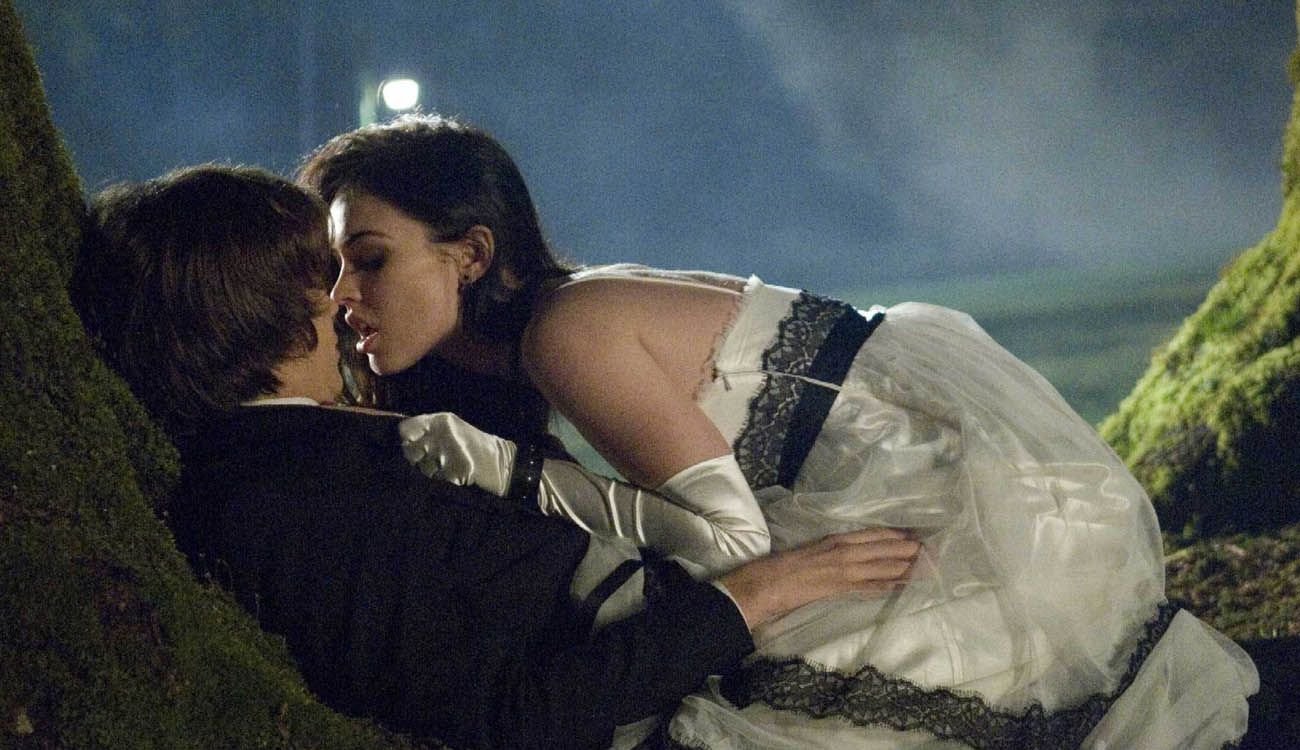
In my opinion, Jennifer’s Body makes some real and cinematically-ahead-of-its-time points about the female experience. Take for example ownership of the body: the titular subject of the movie, Jennifer’s body, is taken away from Jennifer in the first 20 minutes with her humanity, and she is viewed as a dangerous animal where even her best friend Needy is afraid of her. It is also important that the story is not told from her perspective — indeed, it is sometimes difficult to understand her behavior before the demonic possession through Needy, but it symbolizes Jennifer’s voice being taken away from her. Furthermore, the storyline is incredibly cruel to her: she experiences an attack at the start of the movie which dictates her actions through the rest of her story, painting her as a villain and eventually leading to her death.
Something that even the toughest 2009 critics would agree with me is that this movie is, at least partially, sexy. The aforementioned emerging-naked-from-a-lake scene may not be representative of the whole movie, but it is also an indispensable part of it. The murder scenes are filmed with a jarring male gaze camera (think camera panning to sensual and suggestive shadows of our heroine devouring unsuspecting men). Shameless flirtation of the female form with the camera tells two parallel messages: an empowering “femininity is power” and a debilitating “even at the cost of your humanity, you cannot escape the lens of men’s sexuality.” This, in my opinion, is something Cody does exceptionally well. Jennifer is simultaneously a monster with animalistic movements and an embodiment of feminine beauty — simultaneously more and less than human.
image via
While objectification and sexuality are interesting themes, for someone trying to have somewhat of a good time, it may relieve the reader to know that there are lighter themes to the film too. Cody does a great job of touching on teenage insecurity, particular in the most desired and pretty much invincible Jennifer, who’s actions are very visibly influenced by the opinions of Needy. The complexities of female friendships are also addressed: Needy and Jennifer’s friendship is central to the story and we watch Needy dealing with her past feelings for Jennifer being in conflict with her reactions to what Jennifer has become. It is very pleasing to me that in the final moments of the movie, we see Needy avenging her best friend through murdering the people responsible for Jennifer’s fate. While she makes tough decisions regarding Jennifer during her life, Needy ultimately seems to understand that Jennifer, despite putting up a perfect act, was not in control.
Over a decade later, this movie is still very relevant. To me, the underlying themes it addresses are almost synonymous with my understanding of womanhood (not the cannibalism, I swear, but the other bits). The out of control mine-but-not-always relationship with my body, the simultaneous power and vulnerability of being desired, and the insecurities that have no logical place in my brain are things I find to share with so many women in a very distinct way. This movie mirrors those aspects of my experience, making way for a very cathartic viewing. It is also a funny movie about a murderous cheerleader. Truly something for everyone.
image via
cover image via
Gucci 100: A Centennial Collection and the History of Gucci & the Music Industry
It’s 1921 in Florence, Italy. On Via Vigna Nuova, Guccio Gucci has opened the first store of his eponymous fashion house, Gucci. Having been inspired by the lavish luggage he carried as a bellboy at Savoy Hotel in London, Gucci intended to found a brand of immaculate Italian quality with a focus on aristocratic-like luxury. (WWD.com)
Image via WWD.
Fast forward to 2021 and the house of Gucci is valued at $22.6 billion (Forbes). In celebration of 100 years of business (and of their enormous success as a luxury fashion house), Gucci released a special capsule collection in October 2021, titled Gucci 100. Though, curiously, Gucci did not center their centennial collection around the aristocratic inspiration that drove Guccio Gucci to found the brand. Rather, to honor its heritage, Gucci 100 hones in on the brand’s influence on pop culture, more specifically music (Gucci). Furthermore, Gucci opened five pop-up shops in October specifically for the capsule collection.
Image via Elle.
Upon hearing about the theme of the collection, I wondered why pop culture, and why music specifically? Before musicians like Harry Styles and Lana Del Rey became faces of Gucci (or even Lady Gaga portraying Patrizia Gucci in House of Gucci), what was the historical relationship between the brand and the music industry? Before we dive in, here is a brief look into themes of the Gucci 100 collection.
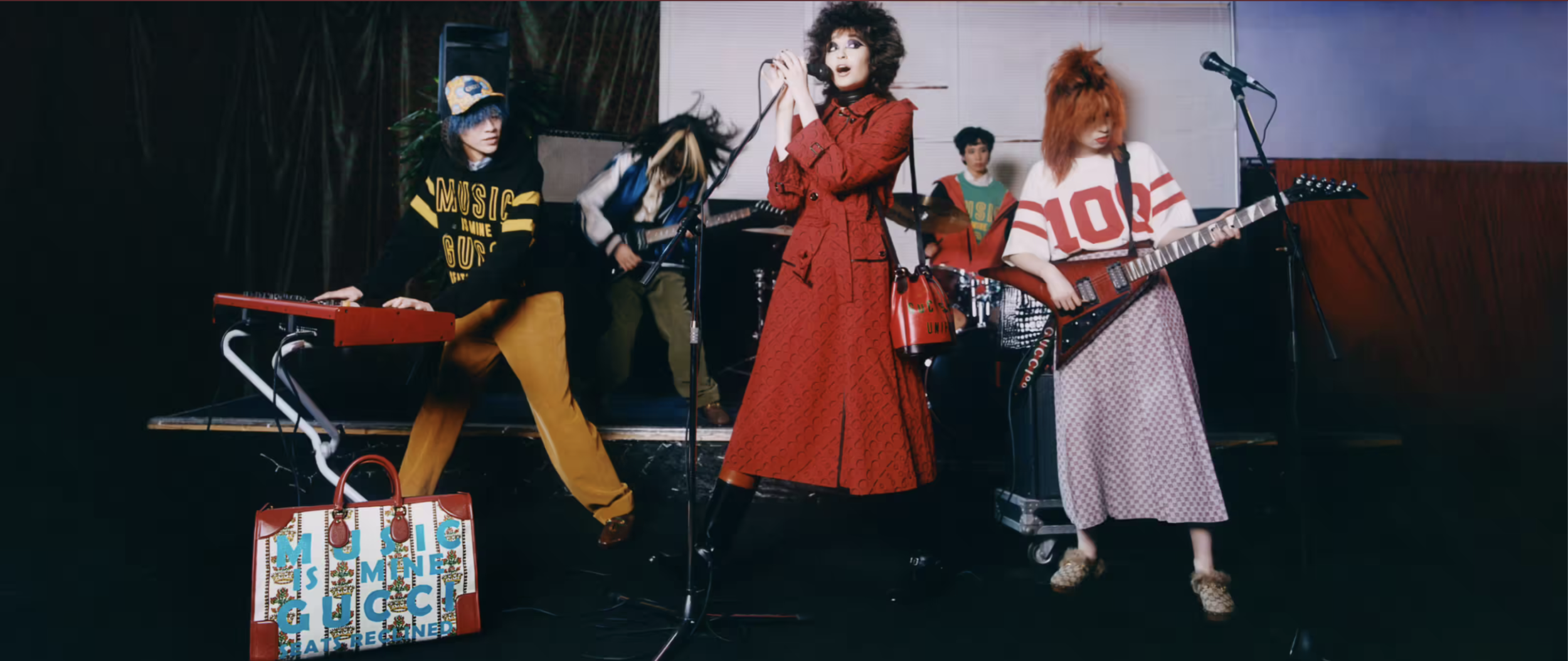

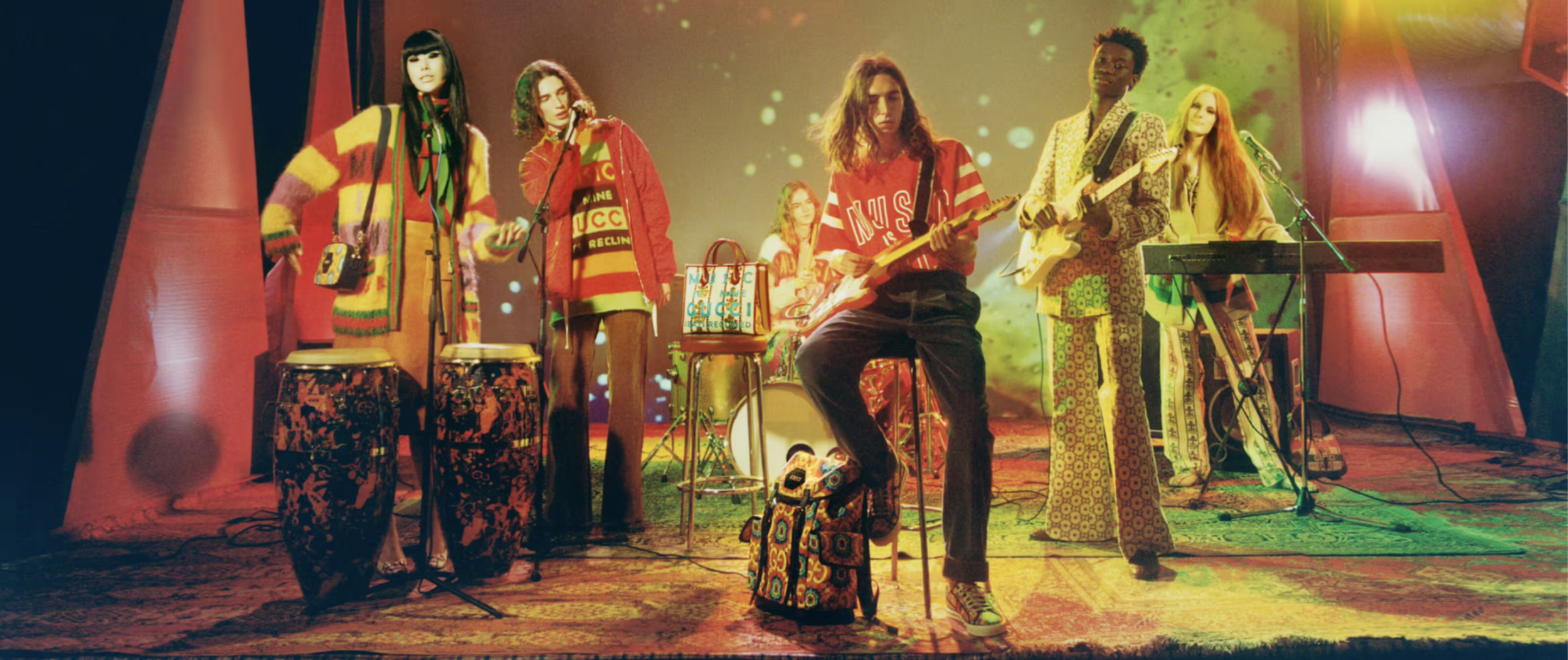
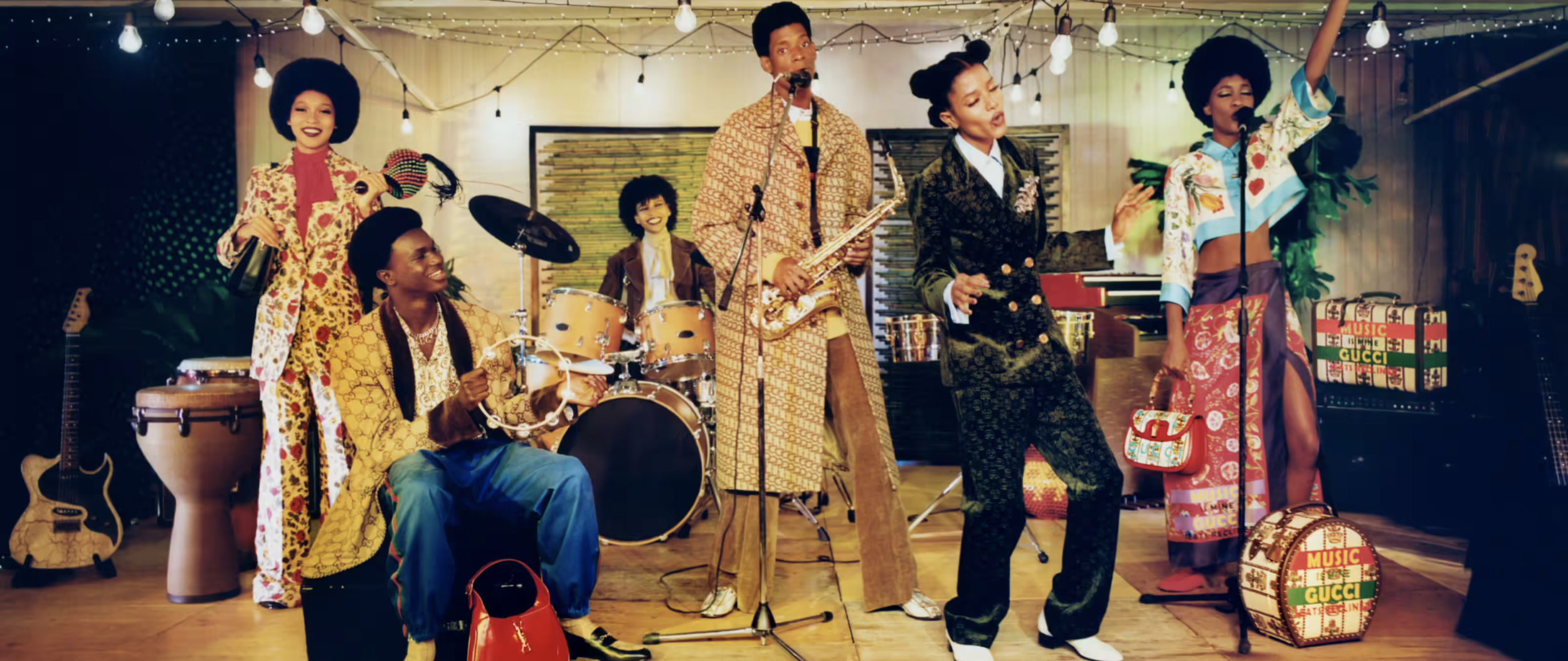
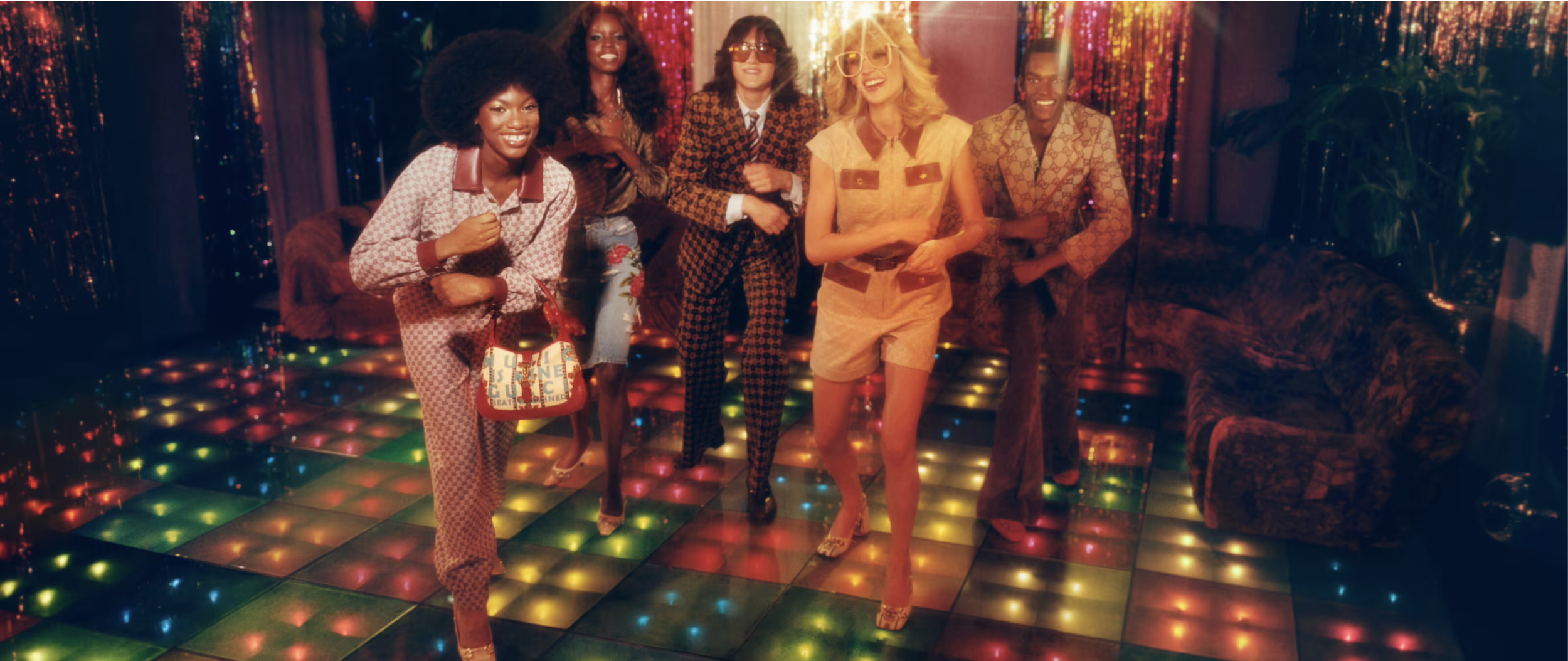

Upon researching the tradition of Gucci collaborations with musicians, not much comes up about music and Gucci before the 1990s and 2000s. Though, the fashion icons who donned Gucci in the 20th century are numerous: Grace Kelly, Jack Kennedy, Sophia Loren, and Princess Diana, to name a few).
Perhaps it’s more effective to start backwards, with the clues that Gucci itself has provided in promoting its centennial collection. To accompany Gucci 100, the brand created a series of playlists (available on Apple Music and Spotify) that appear to contain every song that mentions the word “Gucci”. From disco songs like Sister Sledge’s “He’s the Greatest Dancer”, to rock anthems like “Combination” by Aerosmith, to rap tracks like “Green Gucci Suit” by Rick Ross and Future, Gucci name-dropping has spanned many eras and genres of music.
However, the musical celebration of Gucci may not seem like news to us today. In a poll from 2015, mentions of Gucci in rap music far outnumbered any other brand. (Hypebeast) The Gucci label has become a staple reference that is synonymous with wealth and style. Like Bhad Bhabie’s “Gucci Flip-Flops”, sporting the double G logo could be considered a principle marker of success in the rap industry. Although Gucci-mania in rap seems solely characteristic of 2015-present, the influence of the brand can be traced back to a single fashion individual, Harlem fashion icon Dapper Dan.
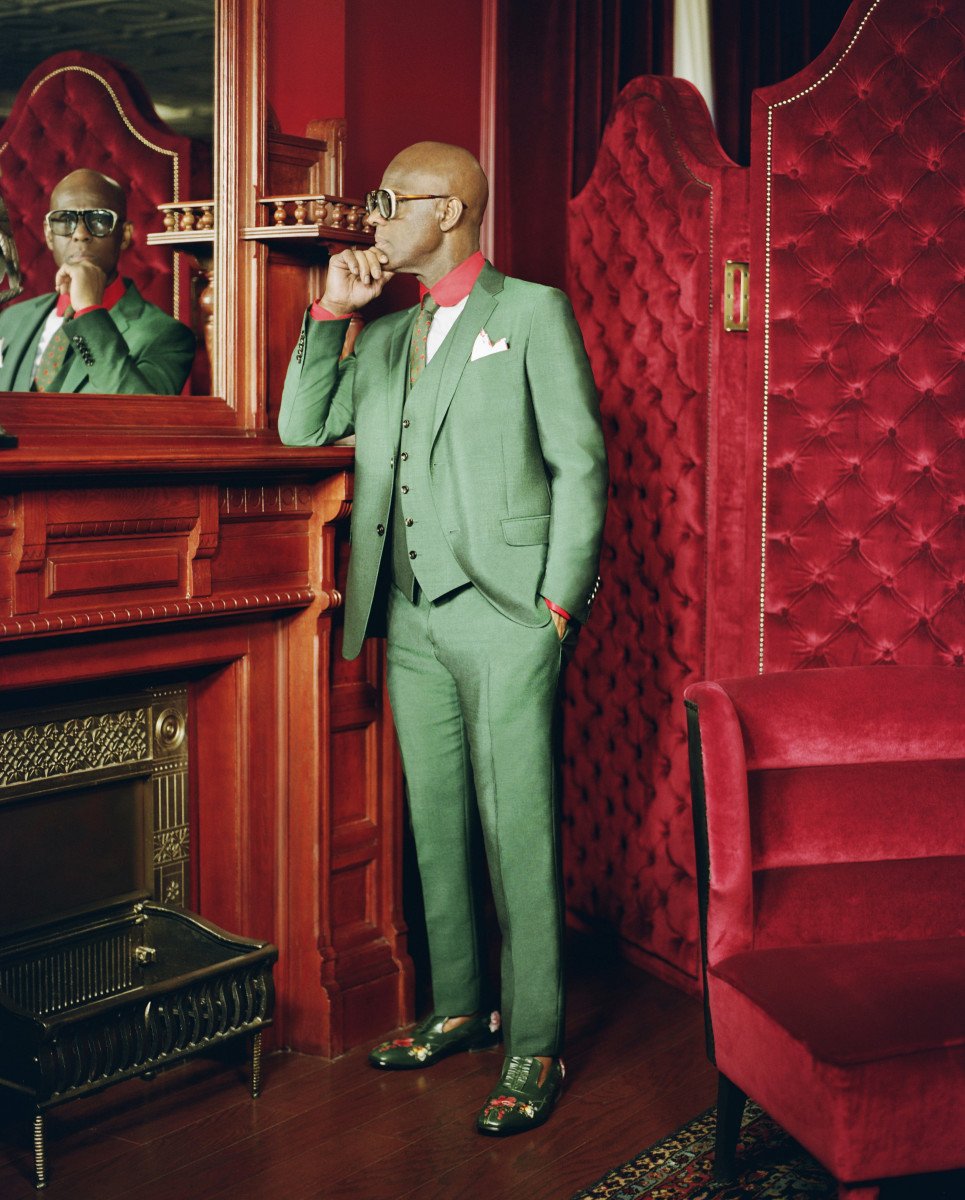
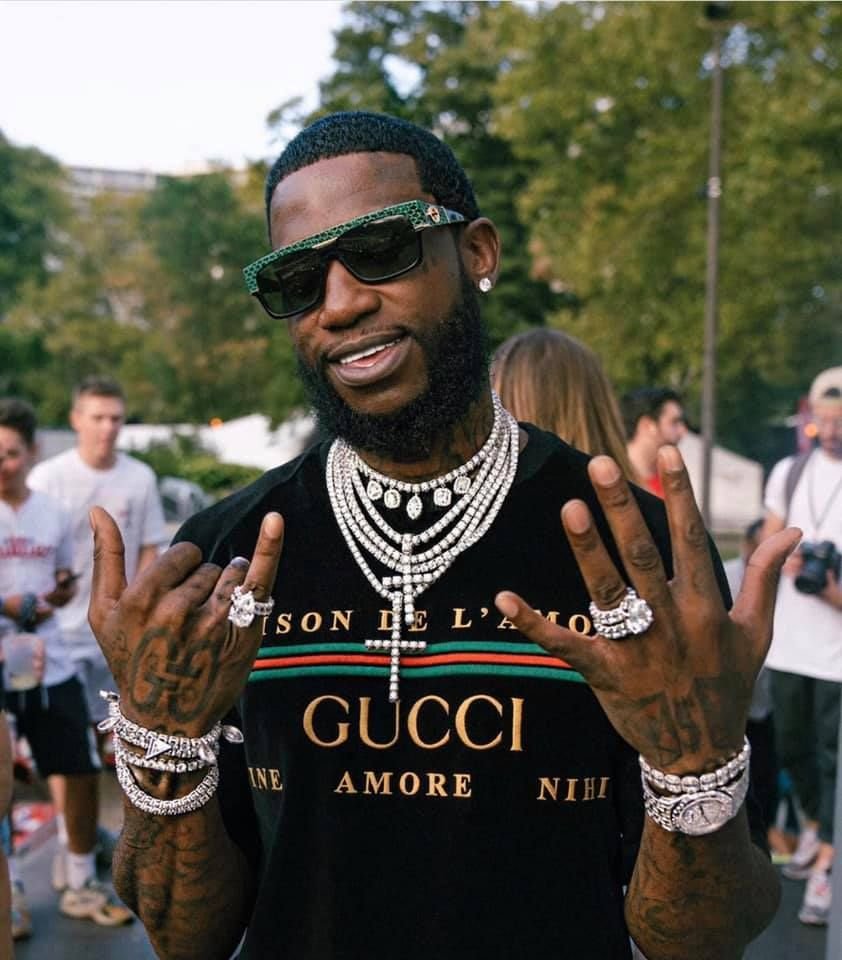
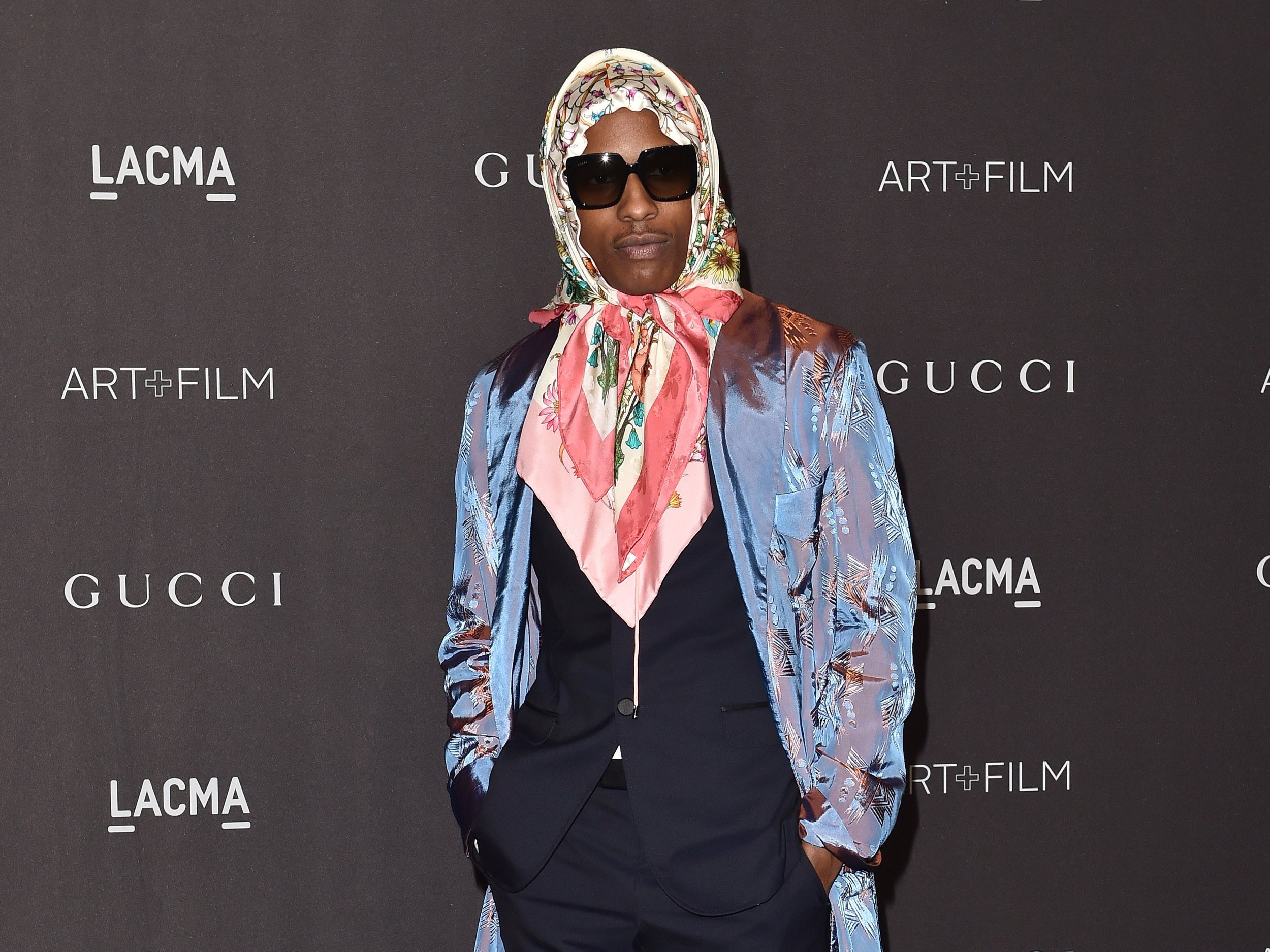

Dapper Dan’s clothing (designs that reincorporated logos of fashion houses like Fendi, Louis Vuitton, and of course, Gucci) was sported by rap musicians throughout the 80’s and 90’s. But in 1992, Fendi won a lawsuit against Dapper Dan for the use of its logo, prompting the closure of his Harlem boutique (NYT). Yet, his influence on rap musicians lives on. Searching for “rappers in Gucci” yields endless results, as Gucci logo-mania has persisted for over 30 years. Today, Gucci itself even dresses big names in the industry, like A$AP Rocky and Snoop Dogg. Despite Dapper Dan’s lasting legacy in fashion and music, the legacy of controversy with luxury brands lived on as well.
In 2018, Gucci was criticized for copying a Dapper Dan Louis Vuitton logo design from 1988. Though advocates for Gucci allege that the brand was merely taking inspiration from him, a history of designers and other large clothing brands stealing from Black designers and artists seems to undermine that claim. The coats exhibit striking visual similarities with puffed leather logo sleeves and a fur body, the only difference being the exchange of the LV logo for Gucci’s double G.
Yet, before the advent of Gucci’s popularity in the rap scene in the late 80’s to 90’s, the Gucci brand itself did not seem to engage frequently with musicians or the music industry, making their choice for the music-themed Gucci 100 all the more puzzling. In the 21st century, on the other hand, Gucci and music have been inextricably intertwined through the choices of muses by Gucci’s current Creative Director, Alessandro Michele. The most notable is, perhaps, pop prince Harry Styles. Both featured in campaigns and dressed by the label for public appearances, Styles has become the indisputably face of Gucci for our generation.
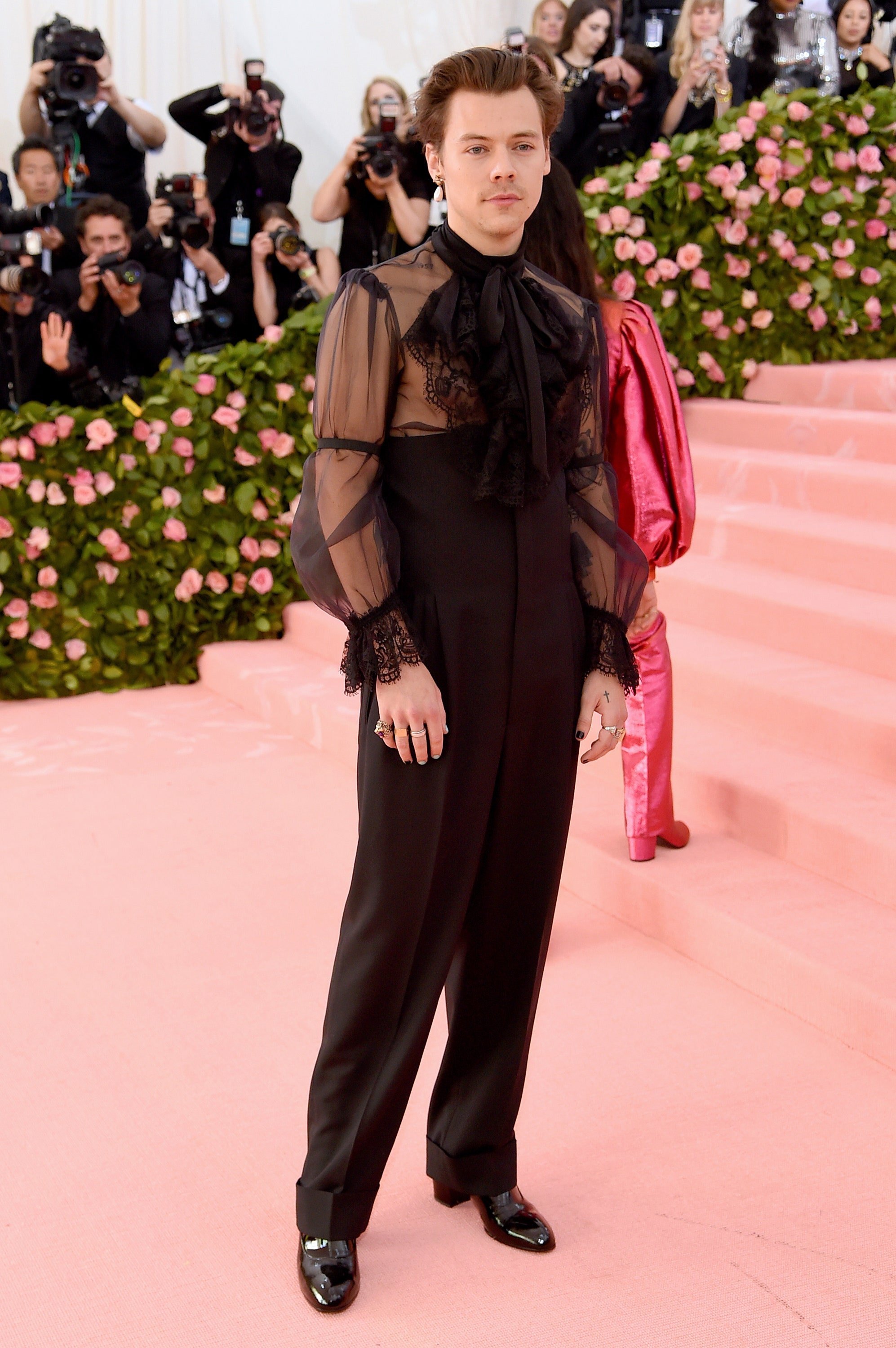
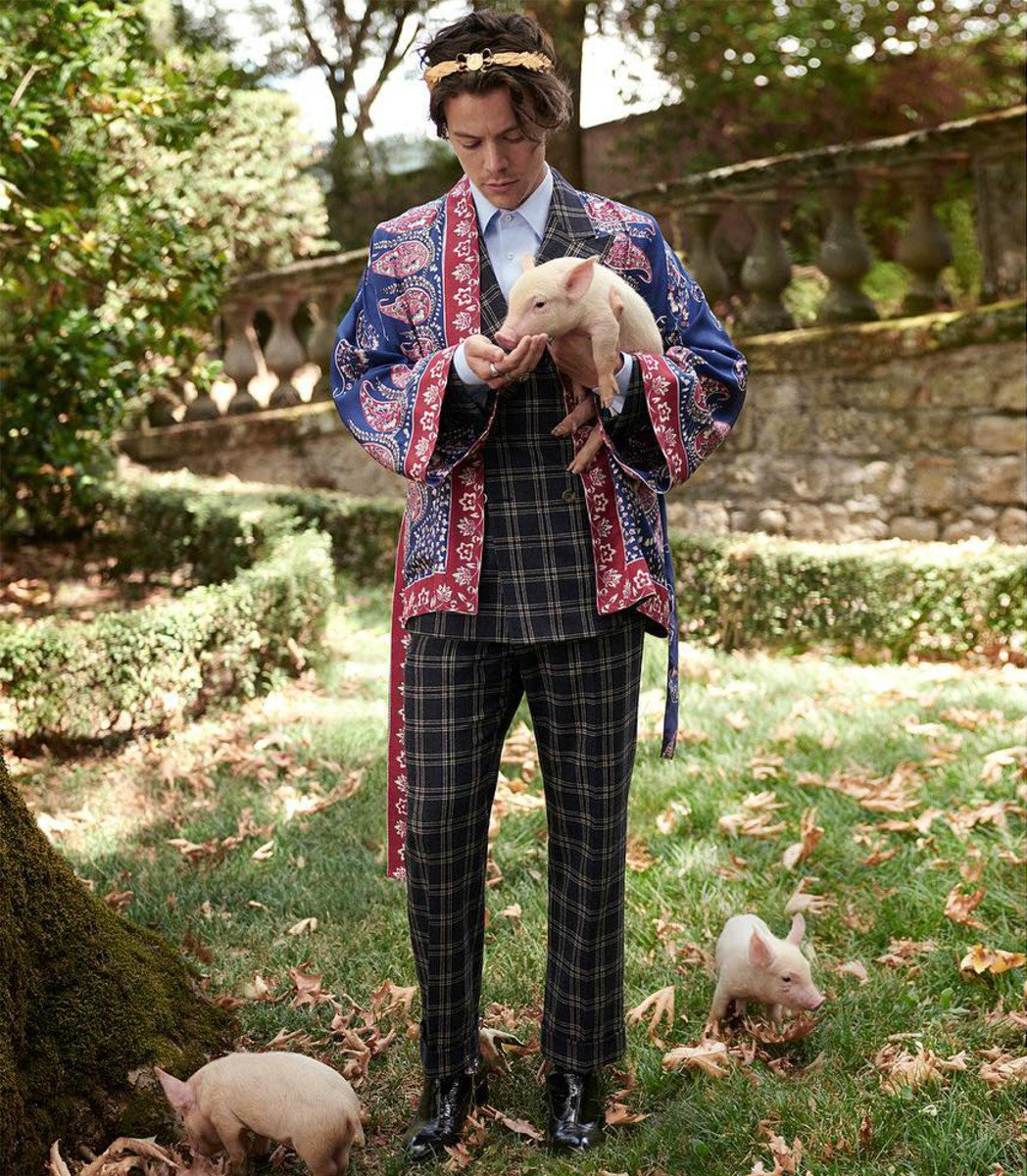
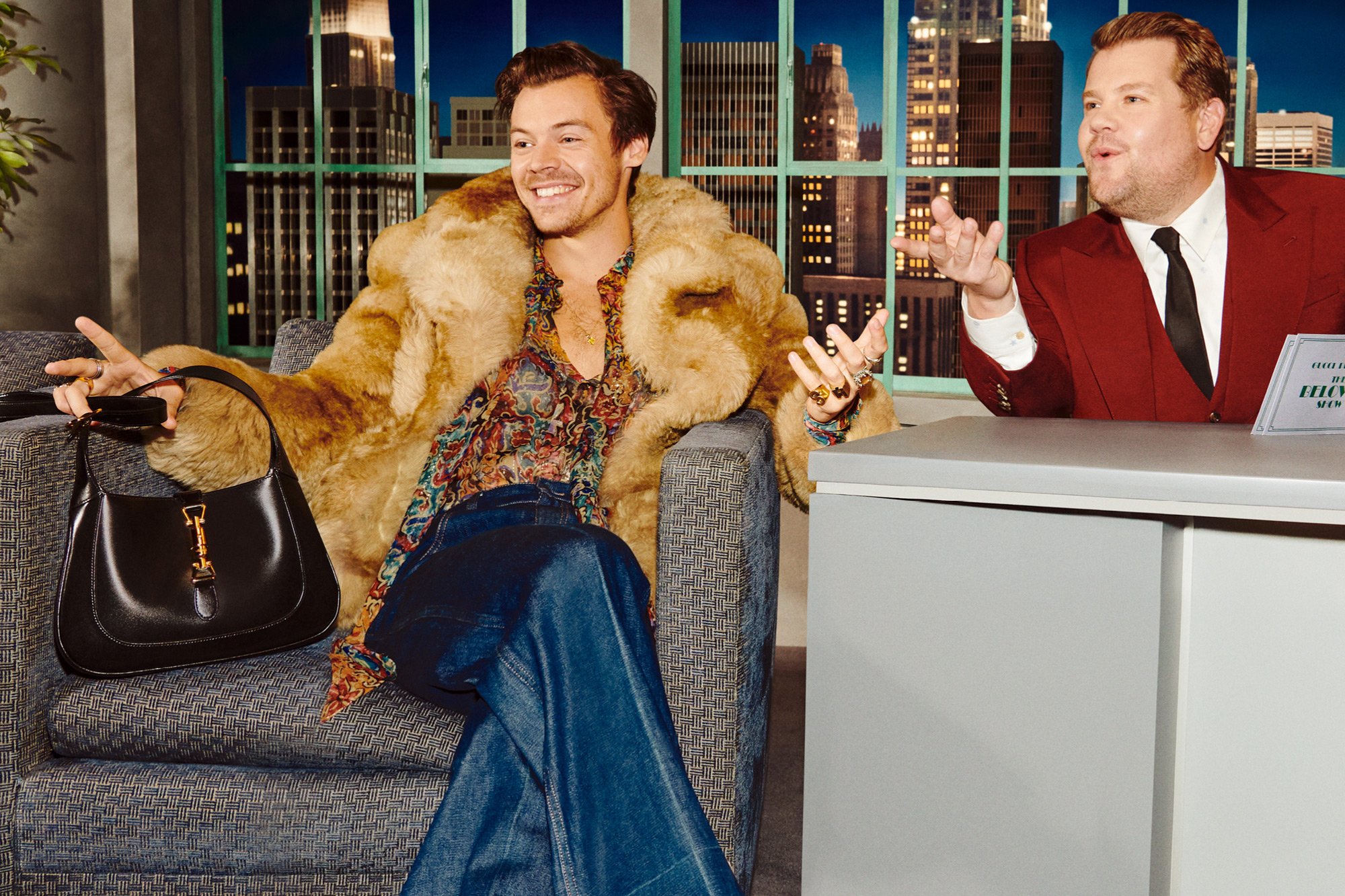
The current ethereal yet flamboyant yet preppy aesthetic of Michele’s designs has also been conveyed through other musical muses. Lead singer of Florence + the Machine, Florence Welch, has been the face of both Gucci jewelry and fragrance campaigns. Similarly, moody-pop icon Lana Del Rey was the face of the Gucci Guilty fragrance campaign in 2019, accompanied by actor Jared Leto. The previous year, Del Rey and Leto accompanied Michele to the 2018 “Heavenly Bodies” Met Gala. With a musical-star-studded group dressed in and promoting Gucci, Alessandro Michele has further sunk Gucci’s glamorous talons into the music industry.
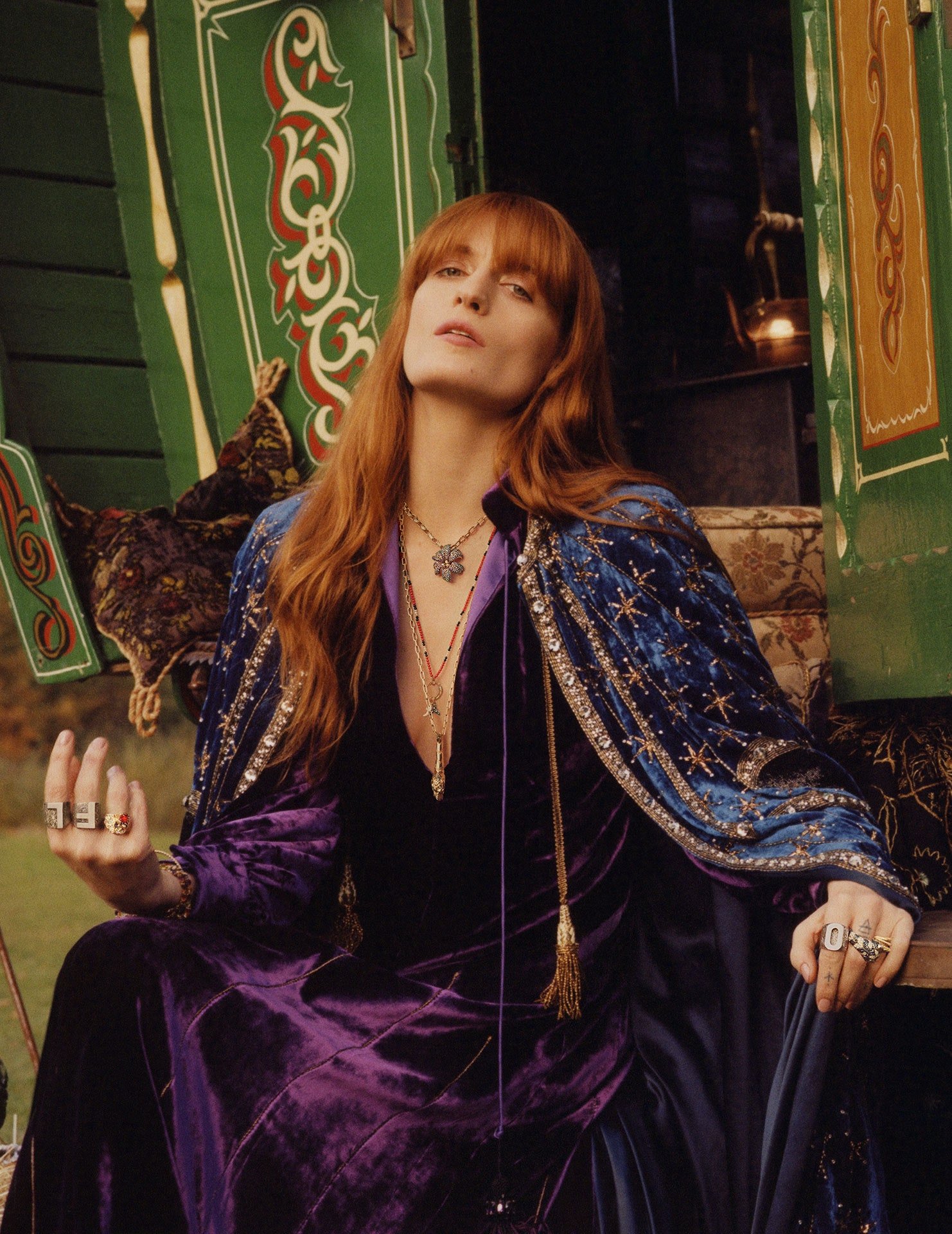

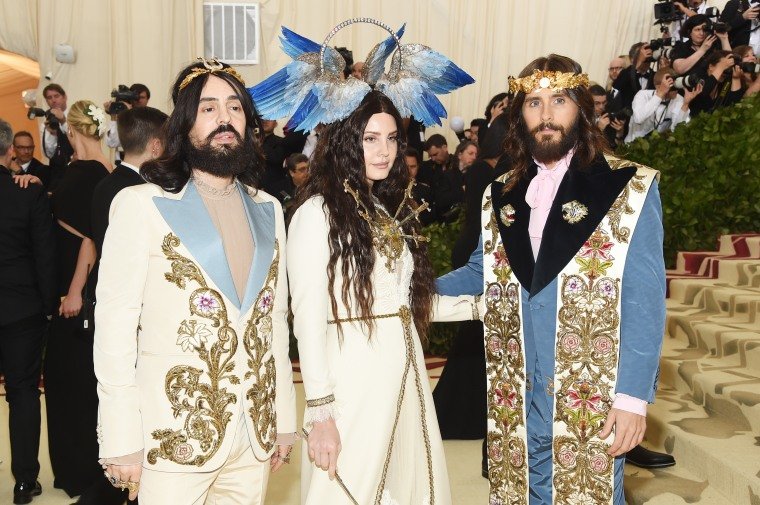
The savvy business strategy of penetrating the world of music has positioned Gucci as an integral part of the cultural zeitgeist. Whereas many designers limit their influence within the world of fashion, the expansion of Gucci into the music industry demonstrates to me that the brand is evolving with popular culture to appeal to younger generations (the next generation of Gucci customers). As a long time fan of Lana Del Rey and Harry Styles, Gucci’s connection to these contemporary pop artists connects me to the label by way of listening to and witnessing the public appearances of said artists who are now Michele muses. In recruiting popular musicians for campaigns and red carpets, Gucci targets the millions of fans that observe and emulate their style. Though this may not necessarily push fans such as myself to purchase Gucci (as it is a luxury brand), awareness and discussion of Gucci on the Internet skyrocket regardless. Furthermore, in listening to rap music, I find myself repeating the iconic lines referencing Gucci, inadvertently advertising the brand through the endorsements by rap artists. When my favorite artists are the faces of Gucci and some of the most popular music of the day drops constant references to it, members of Gen Z like myself cannot escape the grasp of Gucci-mania.
So, we return to our question: why is Gucci 100 based on music themes? The choice does not seem to align with the history of Gucci or its muses before the 21st century. Gucci has even stolen designs from Dapper Dan, who is credited with connecting Gucci and the rap industry. The foundation of the Gucci brand was based on crafting an aristocratic aesthetic, a legacy that can still be distinguished in Gucci’s current designs. Therefore, it seems that the choice for Gucci 100’s music collection is targeted to the standing of the fashion house in pop culture today. Contemporary music and youth culture is adamantly Gucci-crazed: it’s in their songs, in their feeds, on (some) of their bodies, and it’s in their minds. This year, Gucci was the most popular luxury brand online (Luxe Digital). While Gucci may have extrapolated their influence on the music industry beyond pop and rap to other genres to create a visually diverse and interesting capsule collection for their centennial, it is still undeniable that Gucci has the strongest hold of any designer on today’s music and cultural consciousness.
Featured image via Gucci.
Diana Vreeland: The Eye Has to Travel
Have you ever watched fashion documentaries? The directors, through the best aesthetics, allow insiders in the fashion industry to tell their stories and share their insights.
Diana Vreeland: The Eye has to Travel, released in 2011, has always been in the top 10 must-watch fashion documentaries—and I finally watched it this week. The documentary includes interviews of Vreeland with George Plimpton for her memoirs, the models and photographer who worked with her, her celebrity friends, and her family members. Through these different angles, a Diana who is saucier than Devil Wears Prada and lived her life to the fullest is presented.
Interestingly, one of the directors, Lisa Immordino Vreeland, is Diana’s granddaughter-in-law. Though Lisa had never met Diana, she had all the access and connections needed to make this a successful documentary, making it a tribute in turn.
“ The best thing about London is Paris.”
Born in 1903, Diana Dalziel was the eldest daughter of American socialite Emily Key Hoffman and Scottish stockbroker Frederick Young Dalziel. Her early childhood home in Paris was frequently visited by leading artists at the time. As they immigrated to the United States, Dalziel started attending Brealey School to study ballet. When she was 18, she married the love of her life—Thomas Reed Vreeland—and gave birth to Tim and Frederick. She started working at the age of 33 as Harper’s Bazaar’s editor, then became the editor-in-chief of Vogue 26 years later. At the age of 70, she became the special consultant to the Costume Institute of the Metropolitan Museum of Art.
Her intuition towards fashion and her eyes for talent are impeccable. The Great Fur Caravan is one of the most breath-taking series I have seen in fashion magazines, and this 1966 series has proven its timeliness. The twenty-person crew from Vogue made an unprecedented journey to Japan with Richard Avedon, capturing a love story featuring supermodel Veruschka.
Two of the 26 page series
Featured image via
The narrative is about a girl who travels to a foreign country and falls in love with a Japanese giant (the male model is a 7ft sumo wrestler). The photos are truly breathtaking, a merging of art and fashion under an exotic and dreamy setting.
Rumour has said that this shooting cost one million dollars, which would be equal to modern day seven million dollars. It is definitely one of the most audacious projects that Vreeland has spearheaded, but I think the final result has proved its value.
Featured image via
Diana wasn’t pretty by society’s standards, and her mom would even call her ugly, but she has never tried to hide her imperfections. She created her own personal statement and style, which ensues in her work as well.
For Harper’s Magazine, she opened up a column called Why Don’t You? In this column, she wrote down eccentric style ideas that were best enjoyed as concepts as they were difficult to actually execute. Nonetheless, the ideas were playful and precious and could always put a smile on readers’ faces. She is not telling readers to do something a certain way, but shows them that there is another way of doing something. For 26 years, the column shouted freedom and invited the reader into her creative world.
WHY DON’T YOU…?
“ Paint a map of the world on all four walls of your boys’ nursery so they won’t grow up with a provincial point of view?
Cover a big cork bulletin board in bright pink felt banded with bamboo, and pin with colored thumb-tacks all your various enthusiasms as your life varies from week to week?”
Vreeland was not perfect. As a boss, she was strict; as an editor, she often went beyond the budget; as an individual, she over-romanticized things. However, she was special and not afraid to be quirky, and that’s good enough.
The 85 minutes documentary allows the audience to have a glimpse into a fashion pioneer’s life, and is just perfect for a chill night.
Coffee Crawl: Understanding Pour Over Coffee
It was not until I came to college that I realized how prevalent coffee has become in our day to day lives. We wake up, craving coffee. We spend time with friends, grabbing coffee. We survive the day after an all-nighter, drinking coffee. Simply, coffee has become more than an energy booster. It is a tradition with a culture of its own; expressing itself through fashion, music, lifestyle, gastronomy, art, design and more.
Exciting as it might sound, however, coffee culture can be intimidating, especially when faced with a selection where the only item you recognize is a cappuccino. I can’t even tell you how many times I ordered a hot chocolate instead of a coffee because I was too scared to keep a line of caffeine-deprived coffee heads waiting to ask about the difference between an aero press and a syphon.
This is why I created “Coffee Crawl”—a guide that will take you through the intricate and interesting corners of coffee culture, so you don’t have to stick to hot chocolate (nothing against hot chocolate, I do love a good cup of cocoa). I hope this series will serve as a roadmap for all your caffeinated escapades, making your daily coffee more than just a cup that gets you through the day.
The Pour Over
The first stop on our Coffee Crawl is the “Pour Over,” a coffee that my friend described as “insulting and confusing” because it’s twice as expensive as the “drip” coffee at Plein Air even though it looks the same. I completely understand the frustration, the look of the coffee doesn’t do it justice; however, when it comes to taste, that is a whole different story. Compared to the drip coffee that you can simply make at home by pressing a button on your coffee maker, a pour over is manually brewed, requiring significantly more time and skill for which you get a morning cup with a whole new depth of flavor that your Nespresso could never give in return.
A Bit of History
Before explaining the magical process behind this brewing technique it might be interesting to know that the pour over is nothing new. In fact, it’s been around for more than a century thanks to a German lady named Melitta Bentz who got sick of drinking bitter and muddy unfiltered instant coffee. To get rid of the unpleasant sludgy and thick texture she hated so much, Melitta went against the coffee mainstream of her time and started drinking her coffee poured over a brass pot with holes and a paper on top. The paper would catch all the freely floating coffee powder, leaving her cup cleaner and less bitter. Sharing this technique with her friends and community, Melitta slowly started changing the global coffee scene to a point when even the so-called Viennese café intellectuals switched from their adored rough black sludge to the Bentz filter.
Pour Over Now
Funnily enough, not much changed since Melitta’s days. Her approach to coffee is, in fact, what grounds our ever-changing coffee drinking society into tradition. We still prepare coffee the same way she did— we take a filter paper, put it into our pot of choice, throw in coffee grounds and pour in hot water. The only difference is that now we use prettier and more refined brass pots to do so. The ones you will see around the most are Chemex, V60, and Hario Switch; the others, I would say, are designed for first league coffee enthusiasts, and you will probably never see them on a coffee shop menu.
For those interested, here is a quick run down of the three “main” brewers.
Hario Switch
Looks like a V60 but has silicone base for immersion brewing (water soaks and mixes with the beans instead of passing straight through).
Produces a rich dark flavor and a smooth thick texture.
And for those that are a little less enthusiastic but still want to know why it’s worth to pay $2 more for a cup of simple black pour over coffee, the main take away is that a pour over will give you a lighter and smoother coffee taste without the grittiness of unfiltered coffee—which I think worth every extra cent.
Thumbnail image via
Affirmations: A New Kind of Self-Care
Let’s be real, we’re all struggling.
You see yourself in the mirror in the morning and wonder whether your eye bags darkened a little overnight; on your third cup of coffee of the day, you wonder whether there really is such a thing as too much caffeine because you’re still tired to the bone; you rub your red-tinged eyes at two in the morning, the brightness on your laptop screen hurting your eyes, and wonder whether to wake up tomorrow. And the cycle continues. Fun isn’t the only thing dying here.
Affirmations, for me, are a method of self-care that is minimally time-consuming. You don’t need to stand in front of a mirror––you’re not summoning Bloody Mary; you don’t need to be loud, these are private little self-esteem boosters. Even if you don’t think they’ll work for you, they might be worth a shot. Especially since I saved you the time and effort of finding your own, you have no excuse.
Here are some affirmations––pick and choose as you’d like, and feel free to use them as templates to build your own off of:
UChicago-specific
Midterm season will go well for me.
I belong here. My imposter syndrome is lying to me.
I can make my Maroon Dollars last until at least Week 8.
I am doing the best I can, and that is enough.
I am not cold; I like fall weather. (Just me?)
Love & Happiness
I attract miracles and unexpected blessings.
I have meaningful relationships with people who love and understand me.
I love, am loved, and am lovable.
Success
I can achieve anything I want.
I attract success and prosperity.
I am worthy of miracles and the universe is delivering an abundance of them.
Wellbeing & Health
I work on my mindset every single day.
I am in alignment with my true purpose.
I am healthy and in the process of creating a sustainable life.
Confidence & Attraction
My body is a gift. I treat it with care and respect.
No one has the power to make me feel bad about myself without my permission.
I choose to do and say kind things for and about myself.
Switch them up as often as you want, and use them when they feel right. Recite them as many times as you like, whether that’s just once with strong conviction or thrice––each one becoming progressively more confident.
You do you, you do what works for you.
You’ve got this. We’ve got this.
Cover picture source.
Cyber-clothing: Where is the limit of fashion?
Last Friday, as I scrolled through my Instagram feed page, a fashion account caught my attention. As its name Tribute Brand suggests, it seems to be a fashion brand. But the Tribute Brand is not a traditional fashion house, as it only sells digital clothes. Instead of receiving a physical piece of clothes, customers would receive computer-generated clothes through emails.
But how can someone buy these digital clothes? In fact, the process of buying cyber clothes is relatively simple, but also different from any online shopping experience. When you order from their official website, you will need to send the brand pictures you wish to be processed. After waiting for several days, you will receive a picture of you wearing the CGI-generated cyber clothes that are designed to fit your body. The whole shopping process is completely digital and non-contact.
Image via Instagram
Initiated in 2020, when COVID-19 forced everyone into the virtual space, Tribute Brand has attracted hundreds of customers and received thousands of followers on its Instagram page in roughly a year. It is certainly the pioneer in this field of cyber clothing, but it’s not alone. In fact, in recent years major fashion brands are also experimenting with the idea of digital clothes, as exemplified by Balenciaga. Not only did it launch its Fall 2021 collection in the form of a video game, but it also collaborated with Fortnite, a popular online game, just a month ago. In both campaigns, clothing from Balenciaga was worn by computer-generated models or figures; without the context of the brand, it is even hard to tell if these clothes are made to be worn by humans in the physical world.
Image via Balenciaga
Image via Vogue
Perhaps fashion brands’ embrace of the digital world is a product of our increasingly digitized society. After all, fashion has a socializing component; when socializing becomes virtual, fashion no longer needs to be real. Indeed, new technologies, such as VR and AR, have shortened the distance between the real world and the digital one, and this distance will continue to be shortened. It’s hard not to link this trend with the recent news about Metaverse, an initiative announced by Mark Zuckerberg, the owner of Facebook. In the Metaverse, people would learn, play, socialize and collaborate in a 3D virtual world supported by various VR/AR equipment. The future depicted in the movie Matrix, in which reality is intertwined with the digital world, is probably near.
Image via IMDb.
Interestingly, many fashion brands, including Balenciaga, made reference to the Matrix in their recent collections.
But what would you do in this digitized society? Would you spend hundreds of dollars on these cyber-clothings? Or would you consider it a waste of money? Personally, I might buy one of these cyber coats one day, and post it on my social media. Afterall, who would reject a trendy, futuristic coat, even if it is not real?
That's why you think it's beautiful.
It’s aesthetically pleasing to look at, isn’t it? Accurate, symmetric architecture; attractive faces of celebrities; perfect, powerful nature (disregard that it’s a hurricane…)
Amber Heard, American actress
Image via
Taj Mahal, the jewel of India
Image via
While you may not be attracted by these exact pictures, there are definitely some which you like but cannot explain why.
Well, I can. With some maths help.
Simple is beautiful
There is actually a reason why we prefer certain shapes, human appearances, and visual objects in general. And it is not subjective.
There exists golden ratio (golden section, golden mean, divine proportion) in nature, which is the proportion between the length and width of the object, encircled by a rectangle, equalling 1:1.618 - a magical number Phi. The nature always seeks to achieve golden ratio, and every time it does, it immensely pleases our eyes!
… but why?
We can ask for the explanation from the professor of mechanical engineering at Duke University, Adrian Bejan, who notes that, evolutionarily, it’s easier for animals (humans including) to perceive the image scanning it from side to side, not up and down. I believe that is because we observe more space horizontally, and not vertically.
So in the golden ratio, the length is 1.168 times as long as the width, which means that it is easier for our eyes to perceive, and they are naturally attracted to these correctly-geometrically constructed beautiful figures. And, according to the professor, simple is beautiful:
“This is the best flowing configuration for images from plane to brain. When we see the proportions in the golden ratio, we are helped. We feel pleasure and we call it beauty.”
How the rule actually works
Here you can see that these objects actually follow the golden ratio.
And here is a more mathematical proof of the golden ratio of the building - looks convincing, doesn’t it?
a = 1.168b
Image via
The human body also seeks perfection.
Yes, there is a reason for why our arms dangles weirdly beneath our pelvis when we stand still, and why our noses are bigger than our eyes.
That being said, the human body is perfect — it follows the golden ratio.
Image via
Image via
Are celebrities (those who are praised for their appearance) even more perfect?
Well, we can measure it. The Golden Ratio of Beauty Phi determines how close to “perfect” one’s appearance is:
Bella Hadid is 94.35% physically perfect according to the Beauty Phi.
Image via
Beyoncé is honoured to have one of the most beautiful faces, as well.
Image via
So a simple Sherlock’s deduction would be that golden ratio explains why literally the whole world may go crazy about one person’s appearance.
But Watson, we have a problem!
… which is me wondering if it’s a simple coincidence that the most “perfect” faces belong to famous celebrities?
I reckon not. The Greek golden ratio is known for long, and by many. And their surgeon is definitely one of that many:
Hadid’s plastic surgery to achieve golden ratio It’s like being an architect of your face.
Image via
So my takeaway:
Surgery can make people look perfect, but only nature can make people be perfect.
Moreover, some claim that golden ratio has nothing to do with beauty. For instance, John Allen Paulos, a research mathematician at Temple University, argues:
“There’s no evidence for most of these claims. It’s a common rectangle.”
Which I find quite plausible, considering that you cannot find tons of images (be it of people or architecture) with golden ratio, meaning that, maybe, someone just looks for fun drawing challenges and draws spirals and rectangles over people’s faces.
Nevertheless, we can definitely call the golden ratio a “driver” of our eyes: sometimes we arrive at unexpected destinations, or have a weirdly long lay-over somewhere.
But drivers also sleep, and that is when, I believe, the time comes for our subjective visual preferences.
For instance, I know that you think that Reg is ugly. I know it doesn’t follow the golden ratio.
But I. Can’t. Help. Falling in love. With. It.
Featured image via
Why Everyone Should Have an “I am the Main Character” Playlist
If you’re a sane human being, you probably have different music playlists for different moods. If you’re a little more insane, you probably have different playlists for specific activities or situations you’re in. And if you’re psycho, you have no playlists at all and just shuffle through your liked songs. Chaotic neutral energy.
I’d say I’m a healthy insane.
I’m not too specific with my playlists, but the one that does have a very intense, specified vibe for myself is my “I am the main character” playlist.
It’s what you would expect from the title. Do you ever get that sudden feeling where you realize your life could be a melodramatic coming-of-age movie? This playlist is the soundtrack for the scene at the climax of the movie, where your character is realizing the nostalgia of their youth and the potential of their future. You can picture it: a scene of you running along a river on a bright spring day; you biking through your childhood neighborhood and letting the wind hit your face as you smile; or maybe the realization is a bit sadder than that, and you’re on the train or in an Uber staring out the window, watching the rain droplets slide down the glass.
Whatever it is, your playlist will only make sense to you. Every song is chosen because it means something to you – whether you resonate with the lyrics and it aligns with your life, or it was a song you used to listen to when you were younger, or it just somehow fits – it isn’t meant to be for anyone else. It’s yours, it’s unique, it’s meant to make you feel a certain way – a way that I can’t really describe other than it’s the climax scene of your coming-of-age movie!
Because of the quality of exceptionality associated with this kind of playlist, it wouldn’t really make sense to share mine. Instead, I’ll share some songs and explain the reasoning behind why I chose them so that you may create your own!
Green Light by Lorde
Image via
This music video basically represents the exact scene I would see in a movie of myself. She sticks her head out the window of an Uber as it drives through the night, past stoplights as her hair flies and whips from scene to scene. In another shot, she dances like a maniac down the sidewalk and in the bathroom of a club. You can tell that Lorde has just lost herself in the music, something this playlist should make you do. TBH, I don’t think I would dance on top of my Uber while the poor driver takes a smoke break, but the rest of it fits. The song itself is just such a bop even though it’s literally about a breakup. I mean, the album is called Melodrama. You can’t expect me to not put this on this playlist.
Image via
Young Man’s Blues by Parker McCollum
This is a sadder number about nostalgia for one’s youth. I can picture myself in a movie walking through the nearby farm fields and hiking trails of my town. I used to bike through many of the neighborhoods, so I see this song playing through the background of that as well. This song’s lyrics also speak more to me than Green Light – it’s a classic country song about missing your hometown and the relationships you used to have with people there. Some of my favorite lines are, “Growing up ain’t all it’s cracked up to be,” and “Sometimes I wonder if they even still remember my name.” Again, not everyone will relate to this, but it for sure hits home for me.
Things Won’t Go My Way by Peach Tree Rascals
Image via
So, I’ve given you examples of happy and sad songs for your playlist. But what about that classic teenage emotion, angst? It wouldn’t be a coming-of-age movie without an angsty scene with an angsty tune. For me, that song is Things Won’t Go My Way by Peach Tree Rascals. The consistent melody of the guitar in the background along with the line, “I’m running I can’t keep running” begs the picture of my character running down the streets, hopping over obstacles, trying to get away from whatever anxiety is chasing her. The rap verse gives more movement to this song as well, the fast beat mimicking the heightened sense of anxiety of life not going your way. One of my favorite lines is at the end of the rap verse, “No control of this life we live, No control in this life we own, If we did then we'd still be kids, Riding round on our bicycles.” It echoes that same nostalgia as Young Man’s Blues, a longing for a life of simplicity when we were children, free of any worries of the world.
We should all have an “I am the main character” playlist. It reminds us of where we came from and where we’re going. It’s easy to get lost in the world we live in, particularly as college students (at UChicago, nonetheless) in a global pandemic. We become caught up in school work, social life, job searches, and staying physically healthy. Often, we forget to take quality time to ourselves. Having a playlist of music that strikes a chord within you is crucial to grounding. While we may sometimes lose ourselves, this kind of playlist can help us find it.
Featured image via













